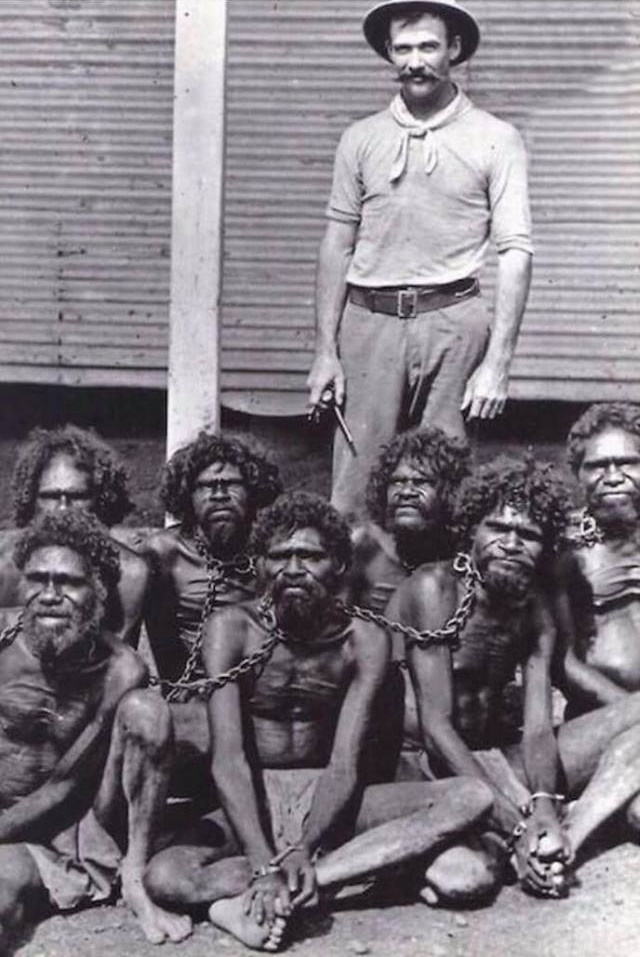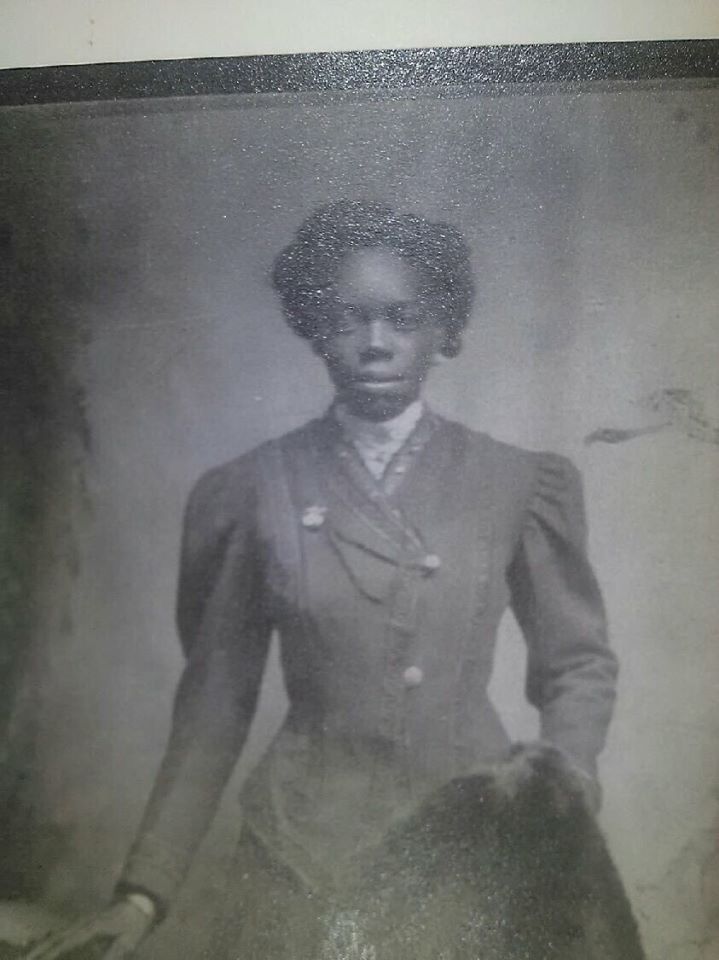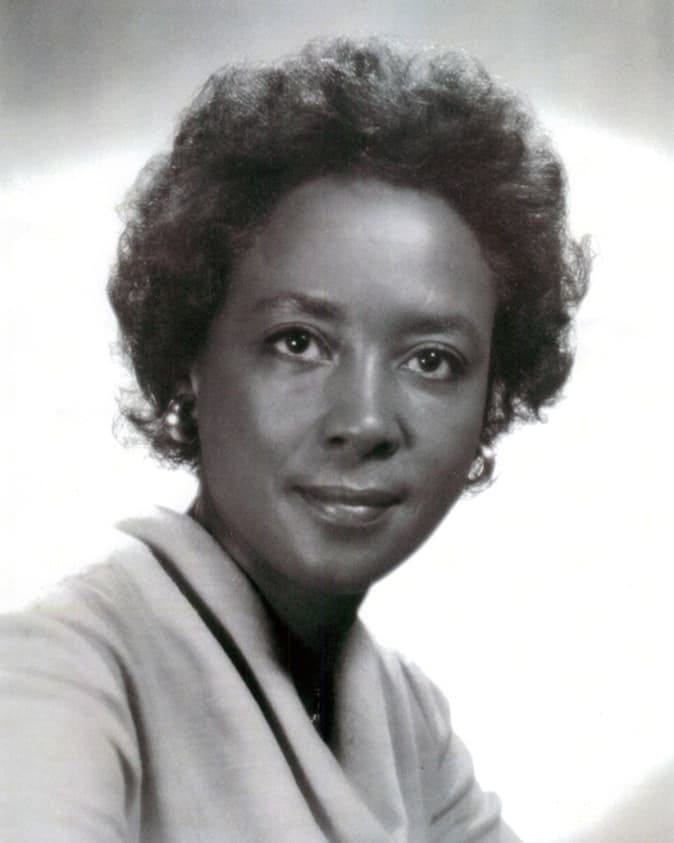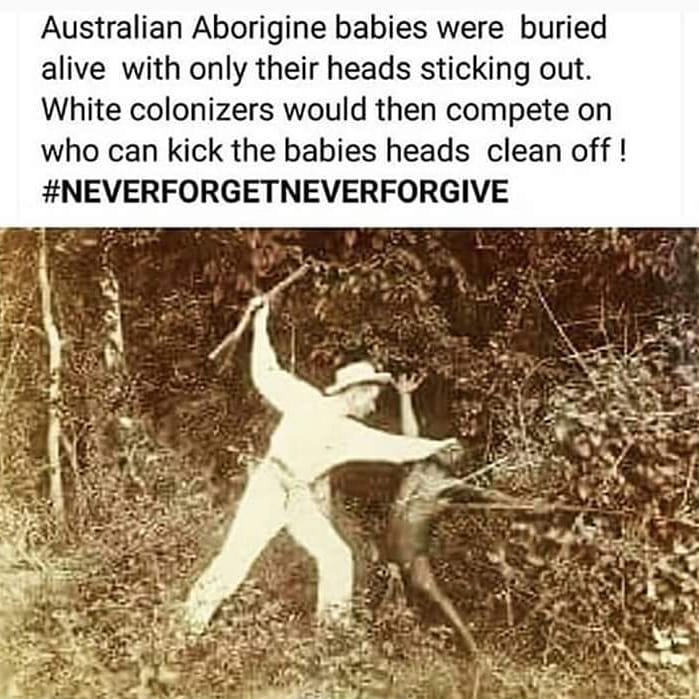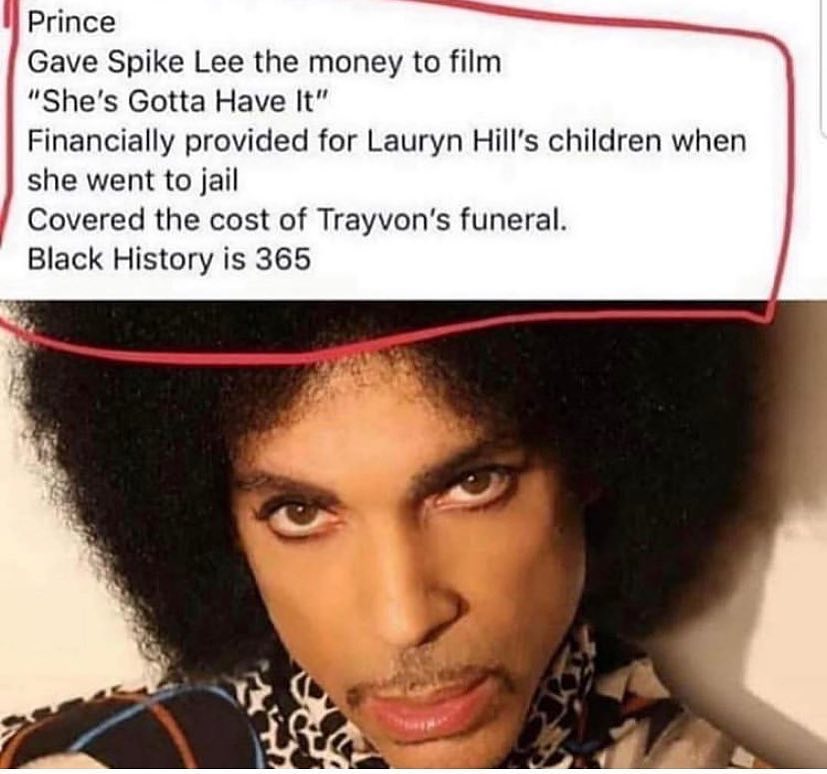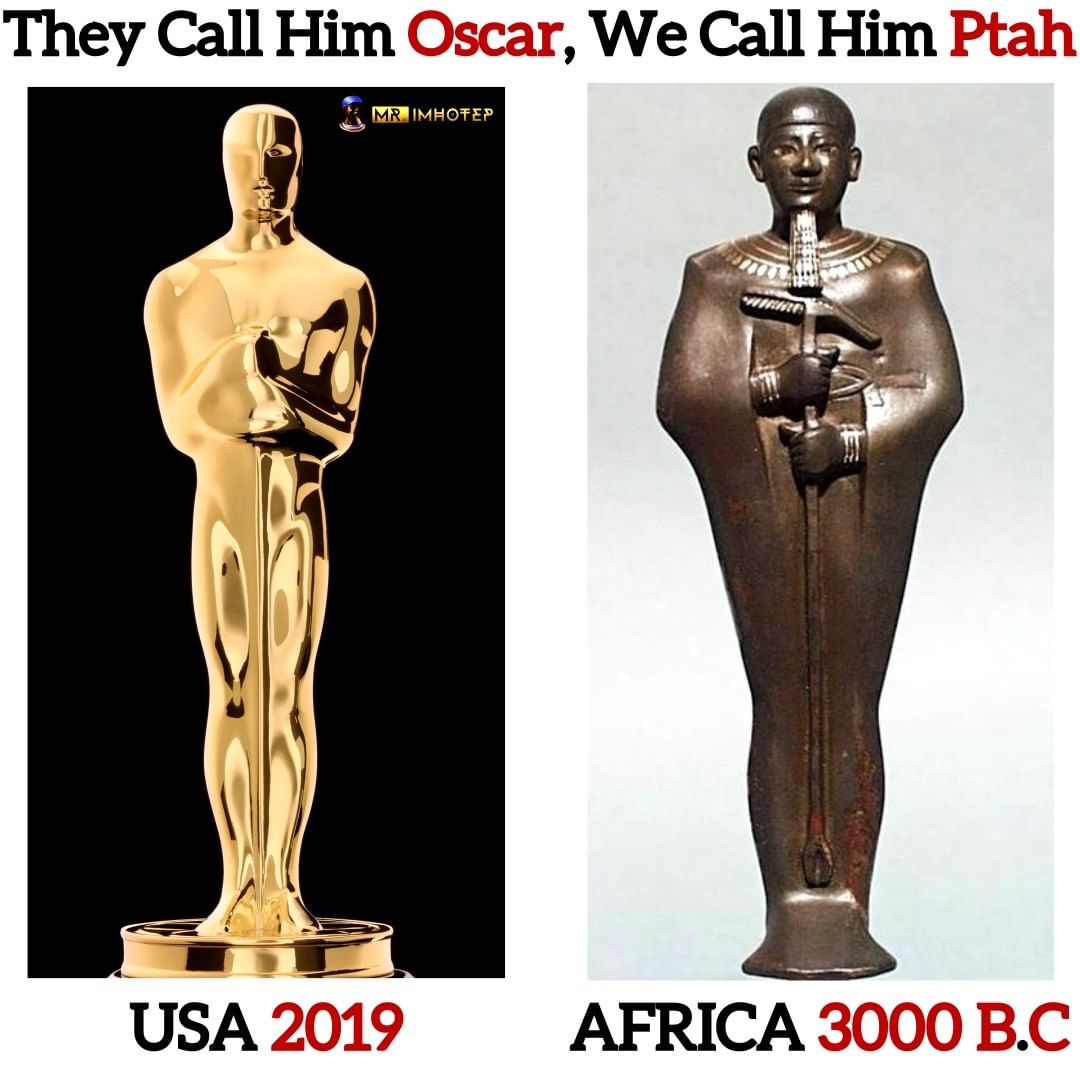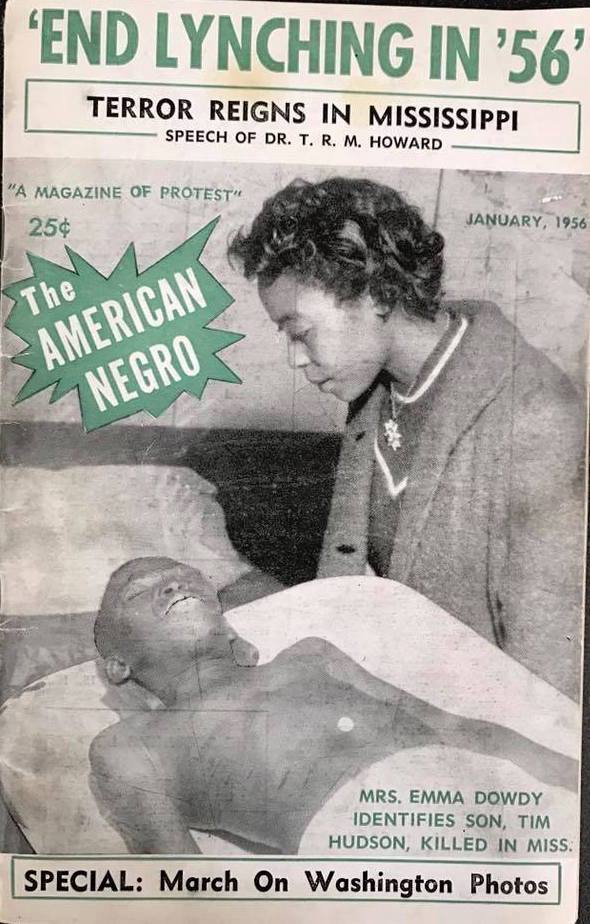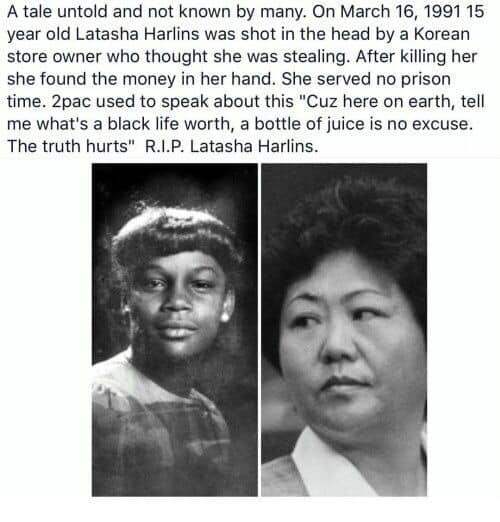You are using an out of date browser. It may not display this or other websites correctly.
You should upgrade or use an alternative browser.
You should upgrade or use an alternative browser.
African American History aka Black History & History of Afrikans World Wide
- Thread starter Lexx Diamond
- Start date
Stories like this really get me. No wonder we don't trust Doctors and hospitalsMeet Vertus Wellborn Hardiman (March 9, 1922 – June 1, 2007) became a victim of a US government human radiation experiment. At the age of 5, the experiment left him with a painful skull deformity that forced him to cover his head for 80 years.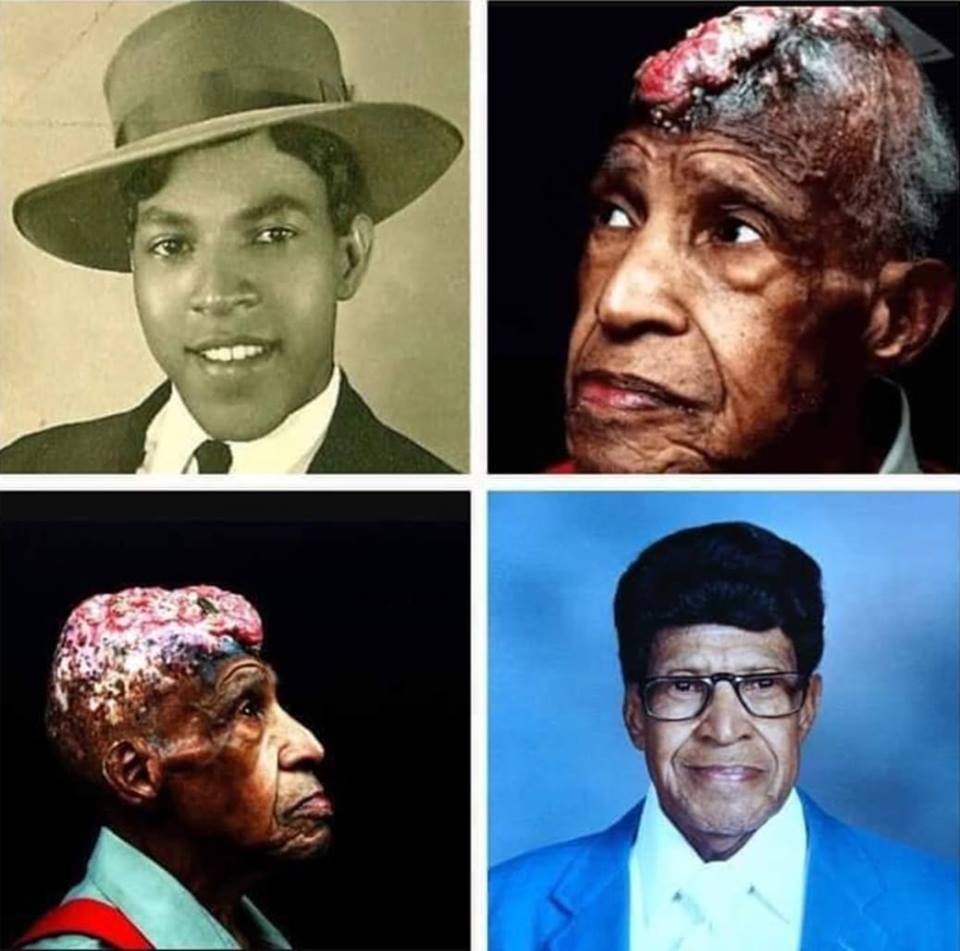
Hardiman was born in Lyles Station, Indiana. In 1928, Vertus attended the local elementary school. The parents of 10 children atschool were approached by county hospital officials and were told that there was a new treatment for “ringworm.” What the parents didn’t know was that the children were actually part of a human experiment on extreme radiation chosen because they lived in such an isolated location, and because they were all Black.
The children were exposed to high levels and many were left with disfiguring scalp scars and head trauma. The effects of the experiments were mostly hidden from the townspeople of Lyles Station. Many of the children wore wigs and hats to cover up the results of the experiments.
Vertus Hardiman finally broke his silence more than 70 years later, to a friend, Wilbert Smith, who partnered with Brett Leonard to produce the documentary, “Hole in the Head: A Life Revealed.” The 2011 film is the amazing story of Hardiman and the nine other children who were affected by the horrible experiment in Lyles Station.
Hardiman was physically affected the worst by the radiation. As a result he experienced a slow dissolving of the bone matter of his skull for the rest of his life. The ensuing deformed head and gaping hole at its top were disguised by a succession of hats, toupees, and wigs. Every day of his life he spent an hour changing bandages and dressing the wound.
He died at age 85. Upon his death, Vertus bequeathed eight million dollars to his church and favorite educational scholarship fund. Vertus harbored no anger and was known to say frequently, “If I am angry, my prayers will not be answered because my heart’s not right.”




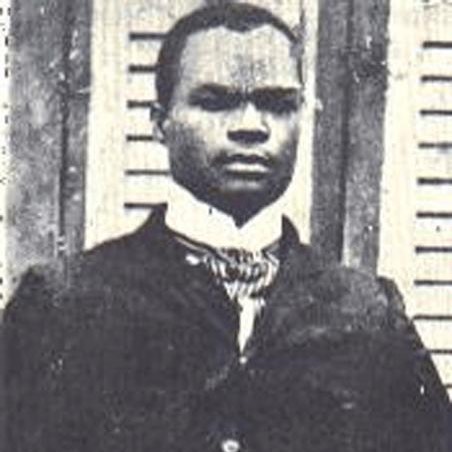
Henry Sylvester Williams (15 February 1869 – 26 March 1911) was a man of insight and intellect. Over a hundred years after his death, some may argue that his name has begun to slip through the cracks of historical memory. However, his socio-political legacy will never be forgotten. Williams is regarded as the founding-father of the Pan-African Movement developed in the early nineteenth century.
Henry Sylvester Williams coined the term Pan-African and organized the First Pan-African Conference in London in 1900, thereby sowing seeds that would yield extraordinary fruit half a century later, long after he’d been forgotten.
Williams was nothing if not energetic. In his third adoptive country since leaving Barbados, he continued undeterred: a rabble-rousing organizer on a mission to ensure that Queen Victoria’s Black subjects were conferred with the justice that British notions of fair play promised. The African Association was formed in September 1897, with an aim to: “encourage a feeling of unity and to facilitate friendly intercourse among Africans in general; to promote and protect the interests of all subjects claiming African descent, wholly or in part, in British colonies and other places, especially in Africa, by circulating accurate information on all subjects affecting their rights and privileges...”
The First Pan-African Conference took place between Monday 23rd and Wednesday 25th July 1900 with the stated aims:
-To secure for Africans throughout the world true civil and political rights.
-To ameliorate the condition of our brothers on the continent of Africa, America and other parts of the world.
-To promote efforts to secure effective legislation and encourage our people in educational, industrial and commercial enterprise
-To foster the production of writing and statistics relating to our people everywhere
-To raise funds for forwarding these purposes
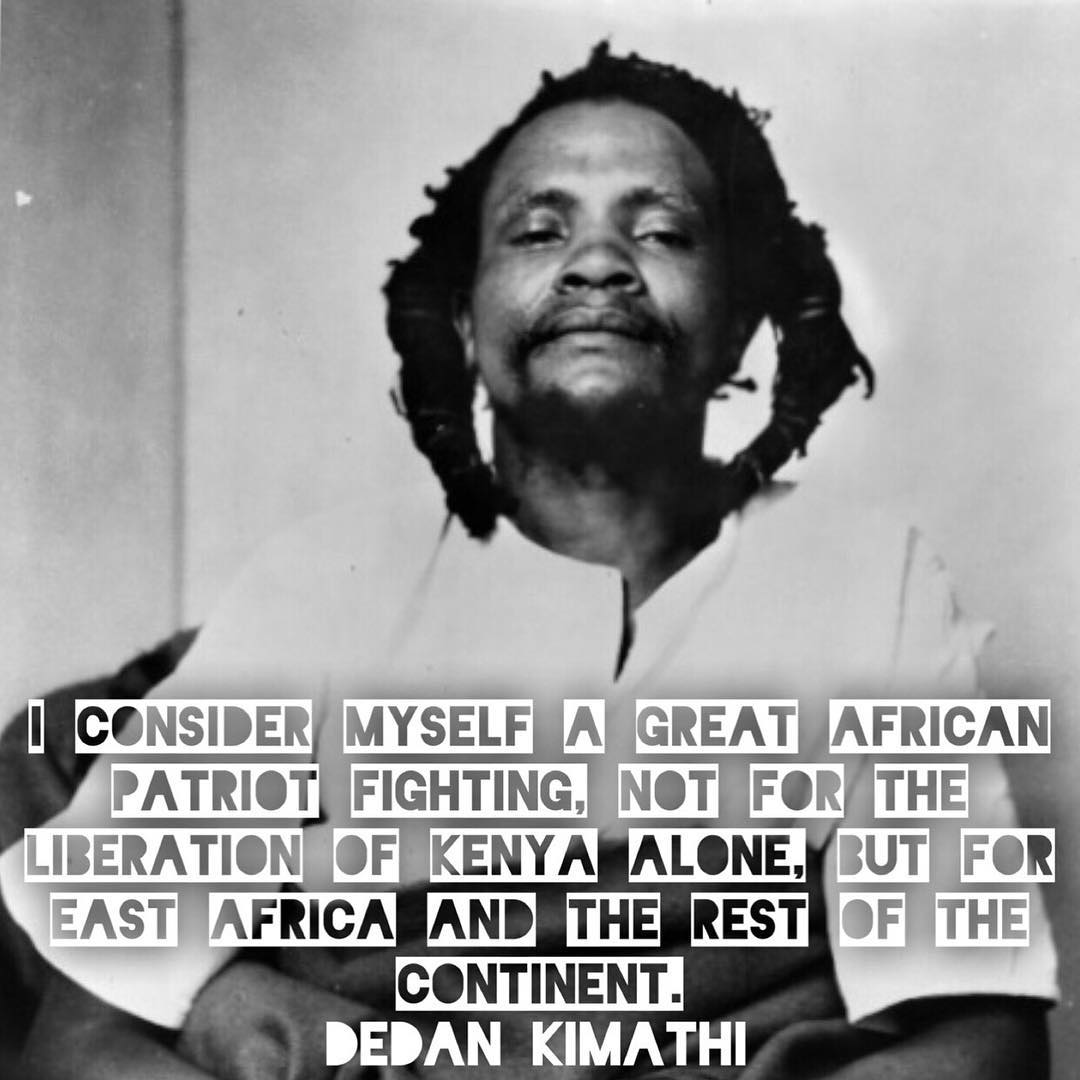
Dedan Kimathi Waciuri 31 October 1920 – 18 February 1957
February 18, 1957: Kenyan freedom fighter leader Dedan Kimathi is executed by the British colonial government.
The hanging took place at the Kamiti Maximum Security Prison. He was buried in an unmarked grave, and his burial site remains unknown.
Dedan Kimathi Waciuri, born Kimathi wa Waciuri, was a leader of the Mau Mau which led an armed military struggle known as the Mau Mau uprising against the British colonial government in Kenya in the 1950s.
A highly controversial character, Kimathi's life has been subject to intense propaganda by both the British government who saw him as a terrorist, and Kenyan nationalists who view him as the heroic figurehead of the Mau Mau rebellion.
Despite being viewed with disdain by the Jomo Kenyatta regime and subsequent governments, Kimathi and his fellow Mau Mau rebels are now officially recognised as heroes in the struggle for Kenyan independence by the incumbent government.
His capture and execution in 1957 led to the eventual defeat of the uprising by the Kenyan government.
LEGACY: ✊Kimathi is viewed as a national hero by the current Kenyan government, who have erected a bronze statue of "Freedom Fighter Dedan Kimathi" on a graphite plinth, in central Nairobi. ✊On the anniversary of the day he was executed, in 2006, the statue of Kimathi was unveiled in Nairobi city centre. Kimathi, clad in military regalia, holds a rifle on the right hand and a dagger on the other, symbolising the last weapons he held in his struggle. ✊This official celebration of Mau Mau is in marked contrast to a post-colonial norm of all previous Kenyan governments regard of the Mau Mau as terrorists. Such a turnabout has attracted criticism of the government, accusing them of historical reinterpretation of the Mau Mau uprising for political ends. ✊Elsewhere, The Dedan Kimathi Stadium in Nyeri was renamed after him, it was formerly known as Kamukunji Grounds.
PLACES NAMED AFTER KIMATHI: Dedan Kimathi University of Technology
Dedan Kimathi Stadium, Nyeri, Kenya (formerly known as Kamukunji Grounds) Kimathi Street, Nairobi, Kenya – One of the main roads in Nairobi's Central Business District and where there's a statue in his
wtficare
honor. Dedan Kimathi Road, Lusaka, Zambia - Situated on this road is the Intercity Bus Terminus and ZCAS University. Kimathi Avenue, Kampala, Uganda Dedan Kimathi Road, Mombasa, Kenya Kimathi Road, Nyeri Town, Kenya Kimathi Road, Nanyuki Town, Kenya Dedan Kimathi Street, Embalenhle, Mpumalanga, South Africa Dedan Kimathi Memorial High School, Nyeri, Kenya
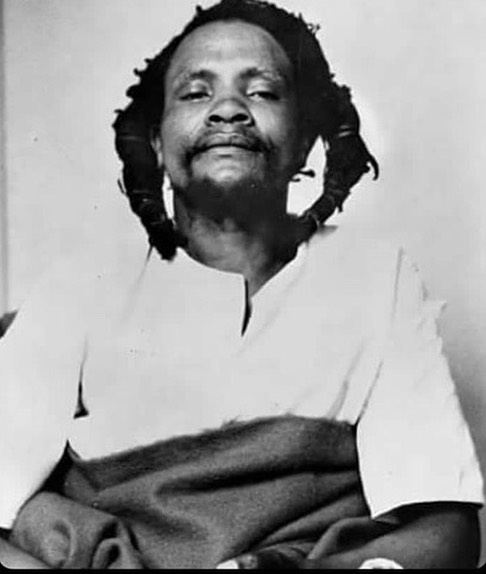
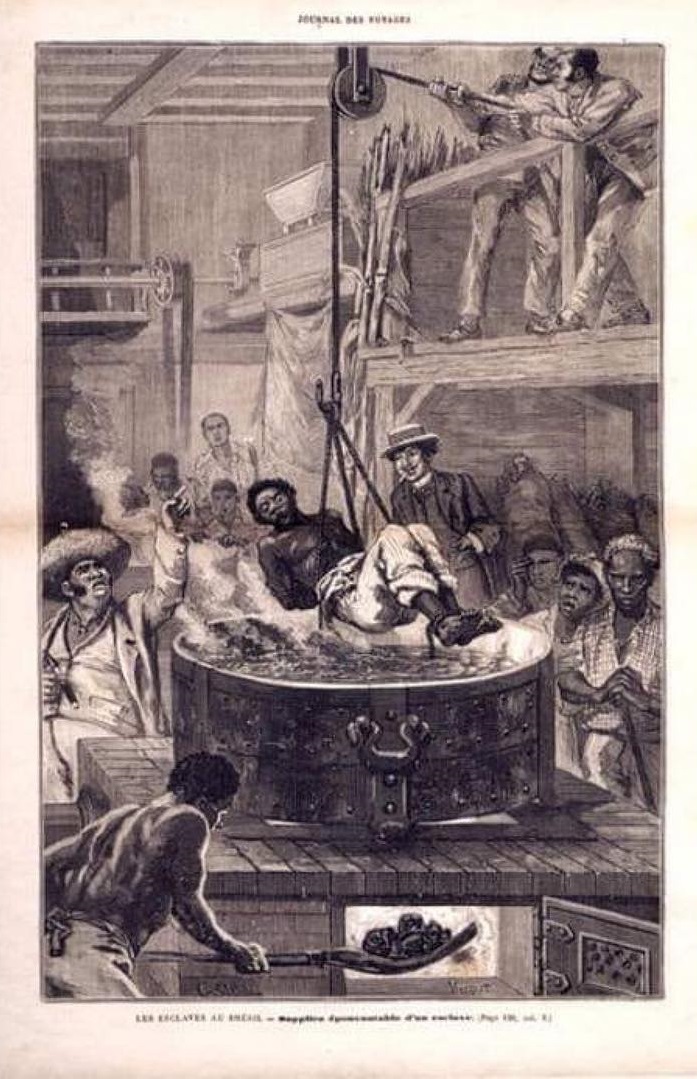
ᴛʜɪs ɪs ᴛᴇʀʀᴏʀɪsᴍ
ᴛʜɪs ɪs ᴀɴ ɪᴍᴀɢᴇ ᴏғ ᴀ 19ᴛʜ ᴄᴇɴᴛᴜʀʏ ᴡᴏᴏᴅ ᴇɴɢʀᴀᴠɪɴɢ ᴄᴀʟʟᴇᴅ "sʟᴀᴠᴇs ɪɴ ʙʀᴀᴢɪʟ: ᴛʜᴇ ᴛᴇʀʀɪʙʟᴇ ᴛᴏʀᴛᴜʀᴇ ᴏғ ᴀ sʟᴀᴠᴇ", ғʀᴏᴍ 'ᴊᴏᴜʀɴᴀʟ ᴅᴇs ᴠᴏʏᴀɢᴇs'. ɪᴛ ᴅᴇᴘɪᴄᴛs ᴀ ʙʟᴀᴄᴋ sʟᴀᴠᴇ ʙᴇɪɴɢ ʙᴏɪʟᴇᴅ ᴀʟɪᴠᴇ ᴀs ʜᴇ ʜᴀɴɢs ᴀʙᴏᴠᴇ ᴀ ʜᴜɢᴇ ᴄᴀᴜʟᴅʀᴏɴ.
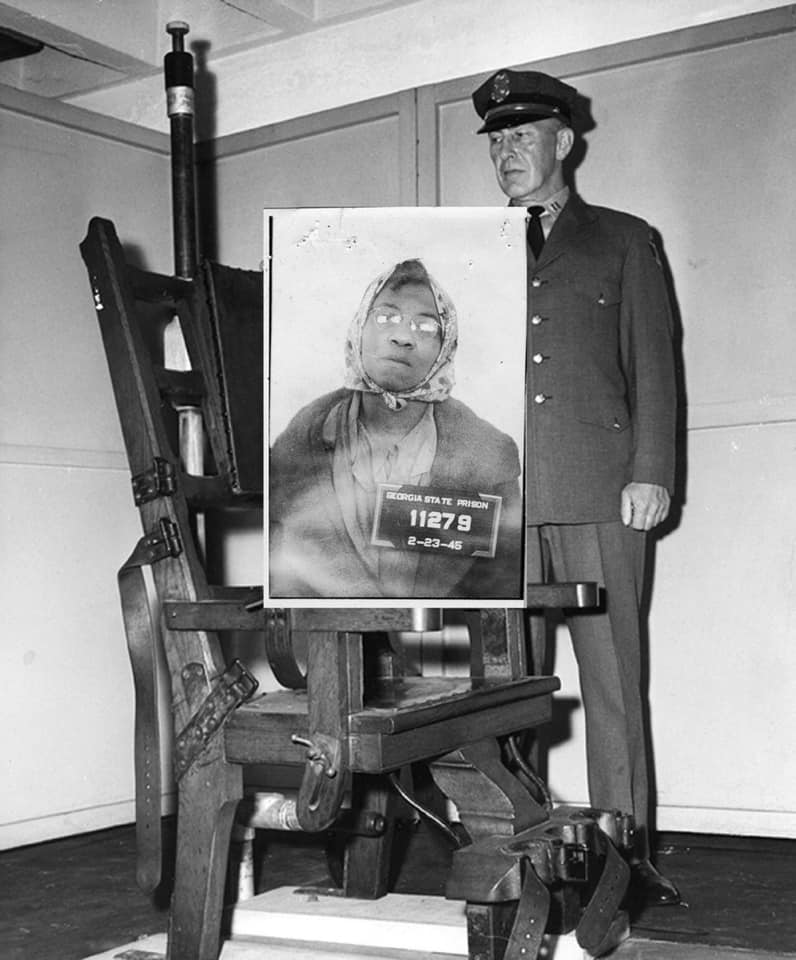
Born: June 8, 1900, Cuthbert, GA
Died: March 5, 1945, Reidsville, GA
Criminal status: Capital punishment
Criminal penalty: Death by electrocution
Conviction(s): Capital murder
Children: Nelsie Baker, James Edward Baker, Edna Baker
On March 5th, 1945, Lena Baker, a maid, mother of three and former cotton-picker, was the first woman to be executed in the state of Georgia. She was wrongly convicted for killing her white employer, Ernest Knight, after he held her captive for days and threatened to kill her if she went back home to her family. Knight promised to kill Lena Baker with an iron bar. She took his gun in self defense and shot Knight. She immediately reported the incident to the authorities and told them exactly what happened and how she shot him in self defense. She was charged with Capital Murder at trial by an all-white male jury. Baker was the only woman executed by electrocution in Georgia. 60 years later in 2005, Baker was granted an unconditional pardon by the state of Georgia.
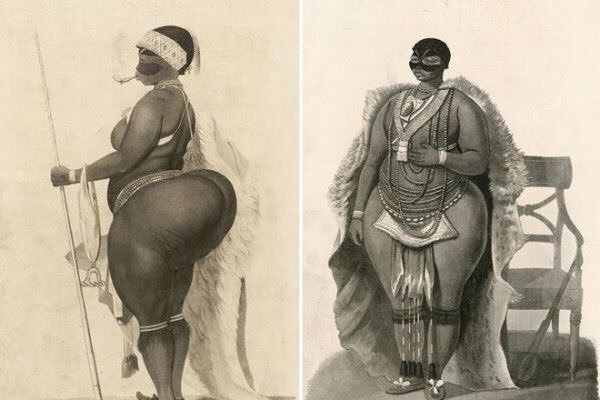
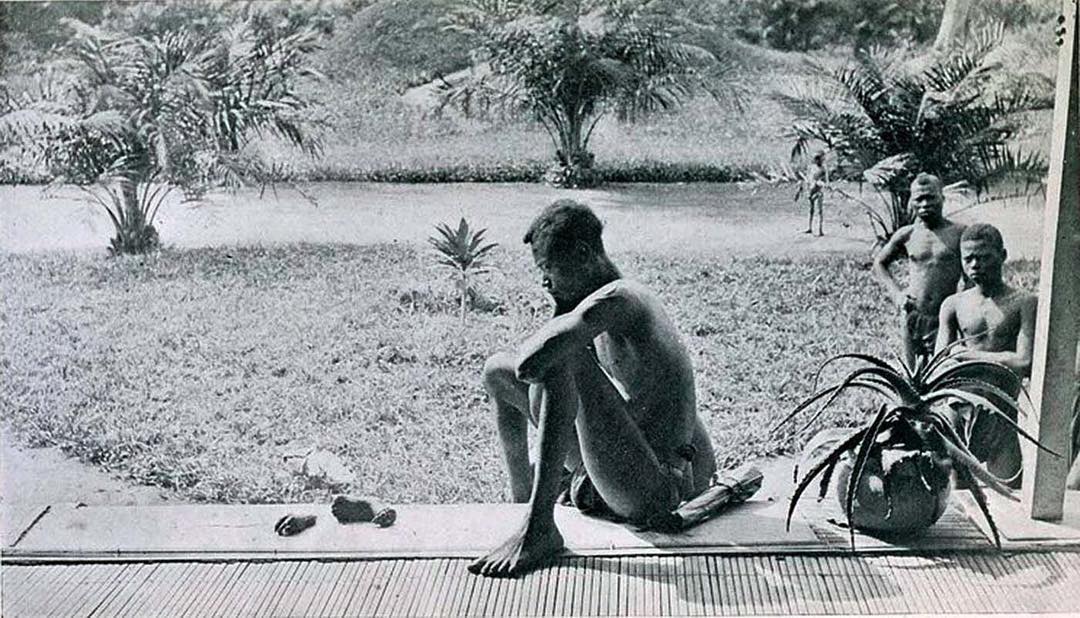
A Father stares at the hand and foot of his five-year-old, severed as a punishment for failing to make the daily rubber quota, Belgian Congo, 1904.
A Congolese man looking at the severed hand and foot of his five-year-old daughter who was killed, and allegedly cannibalized, by the members of Anglo-Belgian India Rubber Company militia.
The photograph is by Alice Seeley Harris, the man’s name is Nsala. Here is part of her account (from the book “Don’t Call Me Lady: The Journey of Lady Alice Seeley Harris”): He hadn’t made his rubber quota for the day so the Belgian-appointed overseers had cut off his daughter’s hand and foot. Her name was Boali. She was five years old. Then they killed her. But they weren’t finished. Then they killed his wife too. And because that didn’t seem quite cruel enough, quite strong enough to make their case, they cannibalized both Boali and her mother. And they presented Nsala with the tokens, the leftovers from the once living body of his darling child whom he so loved. His life was destroyed. They had partially destroyed it anyway by forcing his servitude but this act finished it for him. All of this filth had occurred because one man, one man who lived thousands of miles across the sea, one man who couldn’t get rich enough, had decreed that this land was his and that these people should serve his own greed. Leopold had not given any thought to the idea that these African children, these men and women, were our fully human brothers, created equally by the same Hand that had created his own lineage of European Royalty.
The Congo Free State was a corporate state in Central Africa privately owned by King Leopold II of Belgium founded and recognized by the Berlin Conference of 1885. In the 23 years (1885-1908) Leopold II ruled the Congo he massacred 10 million Africans by cutting off their hands and genitals, flogging them to death, starving them into forced labour, holding children ransom and burning villages. The ironic part of this story is that Leopold II committed these atrocities by not even setting foot in the Congo. Under Leopold II’s administration, the Congo Free State became one of the greatest international scandals.
narration by BGS IBMORJanuary 12th 1917, thirteen black soldiers were secretly hanged at dawn at a military camp outside San Antonio for their parts in a Houston race riot four months earlier.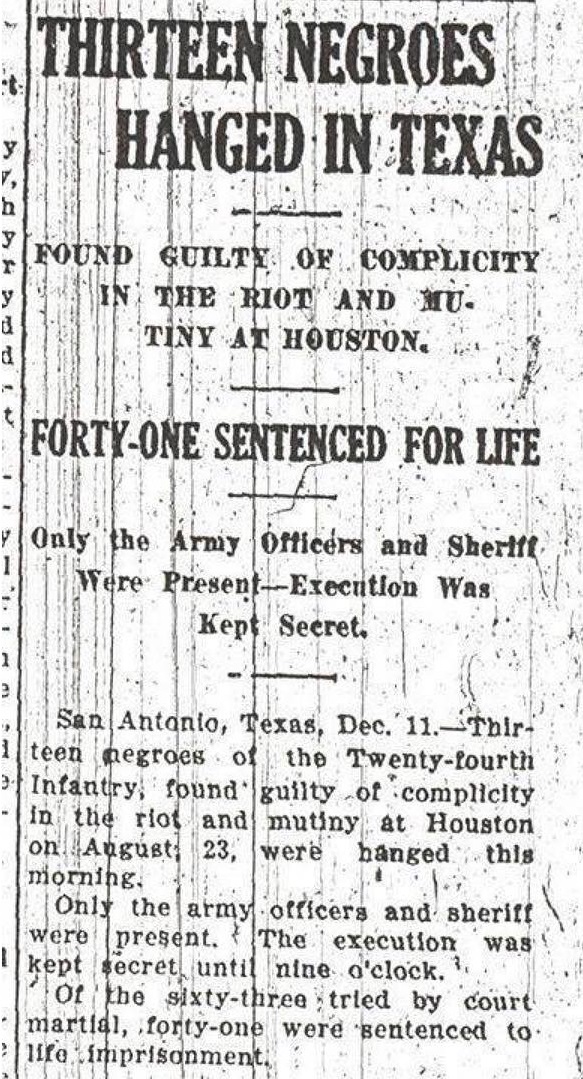
During the nadir of American race relations and just months after America’s entry into World War I, the soldiers of this historic all-black unit had been dispatched to build military facilities in Harris County, where they met animosity from whites beyond the everyday insults of Jim Crow law. Here, the service of “arrogant, strutting representatives of black soldiery” was hated and feared.
When white police arrested a black infantryman who tried to prevent their detaining a drunk black woman, then beat up and shot at a black corporal sent to inquire after him, hostility boiled over. Over one hundred soldiers marched through the city — confronting a mob of white citizens and police who had likewise armed themselves. Fifteen whites and four blacks were killed in the ensuing confrontation.
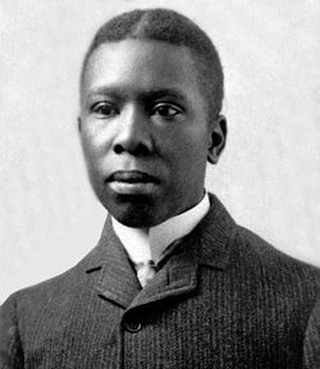
Dunbar spoke precise standard English but chose to write some of his poetry in Negro dialect which he described as “my natural speech”. This excerpt is from his book of poetry, “Lil’ Gal”, published in 1896 “Seen my lady home las’ night, Jump back, honey, jump back. Hel’ huh han’ an’ sque’z it tight, Jump back, honey, jump back”. Dunbar was accused by a few Blacks during the Harlem Renaissance as fostering stereotypes but in spite of the criticism, Dunbar influenced many Black writers. Maya Angelou took the title of her book, “I Know Why the Caged Bird Sings”, from one of Dunbar’s poems.
At age eighteen Dunbar wrote and edited the first African American newspaper in his hometown, Dayton, Ohio. The newspaper was printed by his high-school classmates, Orville and Wilbur Wright.
Dunbar died of tuberculosis at age thirty-three but in his short life he wrote dozens of books of poetry, four books of short stories, four novels, lyrics for a musical and a play.
Schools, hospitals, hotels, libraries and parks all over the United States still carry Paul Laurence Dunbar’s name.
10 things you probably don't know about Paul Laurence Dunbar
Amelia Robinson, Staff Writer
In these parts, we are pretty familiar with Paul Laurence Dunbar’s name.
More than 560 students attend Dayton’s Paul Laurence Dunbar Early College High School.
And we aren’t the only ones who think we know the Dayton-born poet, novelist and playwright.
At one count, nearly 60 high schools around the nation carried the Dunbar name, as did three communities, a theater and other institutions.
“He was the first African-American to be accepted by the discipline of American literature when most people thought that most African-Americans would not have anything to write about,” said LaVerne Sci, a nationally respected Dunbar expert and retired site manager of the Paul Laurence Dunbar House Historic Site at 219 North Paul Laurence Dunbar St. “Dunbar’s name is synonymous with hard work and hope.”
The house - closed for repairs to its visitors center until later this month — is in the National Park Service’s Dayton Aviation Heritage National Historical Park. Owned by the state, it is operated by the Ohio History Connection and managed locally by Dayton History.
Surely you have heard the name, but how much do you really know about Paul Laurence Dunbar?
We asked Sci and Lisa Wood, a Ohio History Connection curator for visual resources and history services unit manager, to share little-known facts about the celebrated figure who died of tuberculosis at age 33 on Feb. 9, 1906.
- 1. Good Teachers

Dunbar was the only black student in his graduating class at Central High School in Dayton. (Airplane co-inventor Orville Wright was a classmate.)
Sci said teachers recognized Dunbar’s talents and pushed him to pursue his passion for writing. He edited his school’s newspaper and was president of its literary society.
Despite a high school diploma — a rarity at the time for either blacks or whites — the only work Dunbar could get was as an elevator operator for the Callahan Building in downtown. He wrote whenever he could, and seized the opportunity when a former teacher invited him to speak at the Western Association of Writers, which happened to be held in town.
Photo courtesy of Ohio History Connection.
- 2. Back to Work

Paul gave a remarkable presentation at the Western Association of Writers, then went back to work at the Callahan Building.
It was an important leap forward for the the writer known as the “elevator boy poet.” Some attendees followed him back to his post. Sci said it happened because a teacher helped.
“I see that as a tremendous metaphor for Dayton today in term of race relations and cooperation between the communities and encouragement of pupils regardless of racial designation,” she said. “Had it not been for his teachers, he could not have been introduced. His community did not have the vehicle for him to thoroughly display his abilities.”
Photo courtesy of Ohio History Connection.
- 3. Embraced at Home First

It is widely known that a white critic William Dean Howells and black social reformer and orator Frederick Douglass helped propel Dunbar’s career, but he started gaining traction in Dayton.
Dunbar, who sold his work at the elevator, had a number of champions and supporters in Dayton, including Charlotte Reeve Conover, a writer and society woman whose attorney husband worked in the Callahan Building.
“He did become recognized in Dayton by Daytonians who used their talents and their resources to help elevate him in his career,” Sci said.
Photo courtesy of Ohio History Connection.
- 4. 13 years

Wood said that one of the most incredible things about Dunbar’s story is that he did so much is so little time.
He traveled the world, even meeting the Queen of England, and wrote prolifically. During a career that spanned just 13 years, he penned about 400 poems in addition to lyrics, novels and short stories.
Sci counts “The Sport of the Gods” as her favorite novel by Dunbar. She said it speaks to the African-American experience.
Photo courtesy of Ohio History Connection.
- 5. Southern Speak

Dunbar came along as America was “looking back to the good old days” through a list of writers that include Mark Twain, Sci said.
While some wrote in southern dialect to mock blacks, Wood said Dunbar, the son of two former Kentucky slaves, did it as social commentary.
“He is clearly making fun of white politicians and saying things he might not have gotten away with if he wrote in standard English,” she said.
Although remembered mostly for his use of southern dialect, much of his work was in conventional English.
“He was hoping he would get more popular acclaim for the works written in standard English,” Wood said. “He was really that tortured artist type. The racism at the time really took a toll on him and at times I think he was frustrated by it.”
Photo courtesy of Ohio History Connection.
- 6. A Marriage on the Rocks

Sick with tuberculosis, Dunbar purchased the house on Dunbar — then Summit Street — for his mother in 1904 after splitting from his wife, the writer Alice Dunbar Nelson.
The marriage was rocky to say the least, Wood says.
“It wasn’t considered highly respectable to hit your wife, but it wasn’t illegal,” Wood said. “There was no concept of domestic or marital rape, but it wasn’t uncommon.”
The Dunbars were together only four years, but never divorced.
Wood said Paul Dunbar was a very complicated person. At one point his wife said he could be the most charming man on Earth, the next they could have horrendous fights.
The split was final.
“His wife never visited him at his home in Dayton,” Woods said. “They had very, very little contact after they separated — it was a very tumultuous relation.”
- 7. Tortured Soul

Despite his many successes, Wood said Paul clearly struggled in life. He suffered from depression and alcoholism.
“The success was somewhat hard-won and his career didn’t always go the way he had wanted,” she said. “He probably hoped his novels would do better in standard English. His success was good, but he wasn’t always satisfied with it.”
Photo courtesy of Ohio History Connection.
- 8. The Toast of Washington

Before they separated, the Dunbars lived in Washington D.C., where Paul worked for a time as a clerk for the Library of Congress.
Sci said they became part of the scene there, and many Washingtonians still claim him as one of their own.
“I have people argue with me that Dunbar ‘belongs’ to them,” Sci said. “They felt like Dunbar was their local celebrity, and I find it interesting that people in Dayton don’t realize how beloved he is in other geographical areas.
This photo features 10c Paul Laurence Dunbar imperforate stamps from 1975. They will be on display in the Freedom Just Around the Corner: Black America from Civil War to Civil Rights exhibit that will open on Feb. 12, 2015 at the National Postal Museum in Washington, D.C.
Photo courtesy of The National Postal Museum.
- 9. A Mother's Love

Born June 27, 1872 to former slaves Matilda and Joshua Dunbar, Paul grew up in proverty.
He was the youngest of Matilda’s three surviving children. His sister died in childhood and is buried near him at Woodland Cemetery. Paul’s parents divorced and his two older half brothers eventually settled in Chicago and had families of their own.
Paul was the apple of his mother’s eyes and often traveled with him.
The house on Summit Street - now Dunbar - was a big deal.
“Mother Dunbar felt rich when she moved in the Dunbar mansion,” Sci said.
Photo courtesy of Ohio History Connection.
- 10. In his Mother's Arms

Paul L. Dunbar breathed his last breath in his mother’s arms while reciting the 23th Psalms on a daybed moved to the house’s parlor, Sci said.
Doctors, neighbors and his secretary witnessed the death.
“He died on the word death,” Sci said.
(Yea, though I walk through the valley of the shadow of death..)
Matilda kept the house and her son’s records much as it was while her son was alive, opening to the public on his birthday.
The state of Ohio purchased the house shortly after Matilda’s death in 1936. It was the first state memorial to an African-American in the nation.
Photo courtesy of Ohio History Connection.
Contact this blogger at amelia.robinson@coxinc.com or Twitter.com/DDNSmartMouth
https://www.dayton.com/what-to-love/10-things-you-probably-didnt-know-paul-laurence-dunbar/
Watch the amazing inspirational video below.
Black people are GREAT!
The Robert J. Brown Story-
"You Can't Go Wrong Doing Right"
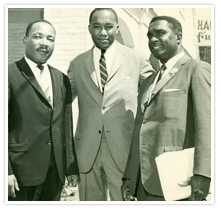


Called "a world-class power broker" by the Washington Post, Robert J. Brown has been a sought-after counselor for an impressive array of the famous and powerful, including every American president since John F. Kennedy. But as a child born into poverty in the 1930s, Robert was raised by his grandmother to think differently about success. For example, "The best way to influence others is to be helpful," she told him. And, "You can’t go wrong by doing right."
Fueled by these lessons on humble, principled service, Brown went on to play a pivotal, mostly unseen role alongside the great and the powerful of our time: trailing the mob in 1950s Harlem with a young Robert F. Kennedy; helping the white corporate leadership at Woolworth integrate their lunch counters; channeling money from American businesses to the Civil Rights movement; accompanying Coretta Scott King, at her request, to Memphis the day after her husband had been shot; advising Richard Nixon on how to support black entrepreneurship; becoming the only person allowed to visit Nelson Mandela in Pollsmoor prison in Cape Town.
Full of unbelievable moments and reminders that the path to influence runs through a life of generosity, YOU CAN'T GO WRONG DOING RIGHT blends a heartwarming, historically fascinating account with memorable lessons that will speak to the dreamer in all of us.
Black people are GREAT!
The Robert J. Brown Story-
"You Can't Go Wrong Doing Right"



Called "a world-class power broker" by the Washington Post, Robert J. Brown has been a sought-after counselor for an impressive array of the famous and powerful, including every American president since John F. Kennedy. But as a child born into poverty in the 1930s, Robert was raised by his grandmother to think differently about success. For example, "The best way to influence others is to be helpful," she told him. And, "You can’t go wrong by doing right."
Fueled by these lessons on humble, principled service, Brown went on to play a pivotal, mostly unseen role alongside the great and the powerful of our time: trailing the mob in 1950s Harlem with a young Robert F. Kennedy; helping the white corporate leadership at Woolworth integrate their lunch counters; channeling money from American businesses to the Civil Rights movement; accompanying Coretta Scott King, at her request, to Memphis the day after her husband had been shot; advising Richard Nixon on how to support black entrepreneurship; becoming the only person allowed to visit Nelson Mandela in Pollsmoor prison in Cape Town.
Full of unbelievable moments and reminders that the path to influence runs through a life of generosity, YOU CAN'T GO WRONG DOING RIGHT blends a heartwarming, historically fascinating account with memorable lessons that will speak to the dreamer in all of us.
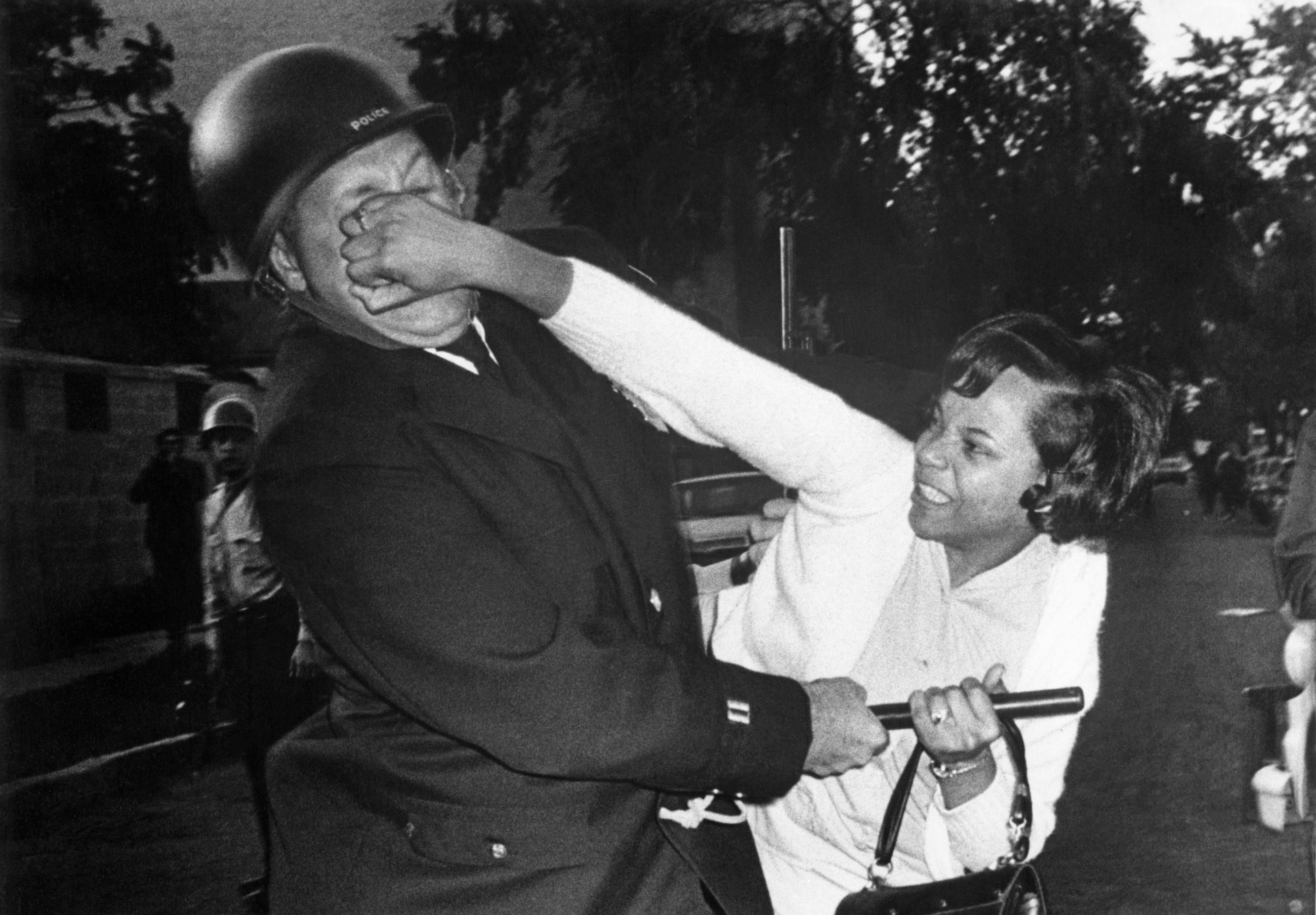
Milwaukee 1967
Civil Disturbances (July 30, 1967)
In July 1967, Milwaukee experienced a civil disturbance, or what some have called a riot. Compared to other cities like Detroit, Newark, and Los Angeles, Milwaukee’s disturbance was nowhere near as violent or chaotic. In fact, the violence reached its peak and died out in a five-hour period. It began on the night of July 30 at around 9:45 p.m. on Milwaukee’s North Third Street. By the early morning of July 31, the disturbance had settled down.
Three people died from gunshot wounds and 100 persons were injured as a result of the disturbance. A number of homes, cars, and businesses along North Third Street were destroyed or severely burned. A total of 1,740 people were arrested. One of the worst tragedies of the disturbance was the shooting death of 18-year-old Clifford McKissick.
Explanations on how and why the disturbance started vary. Some alleged that it started after a traffic accident, and some claimed that it started outside of a nightclub. Nevertheless, by 9:45 p.m. on the night of July 30 windows had been broken out of several business establishments on Third Street. Several small fires also broke out. A few hours later the police department notified Mayor Maier of the disturbance. The Mayor declared a state of emergency and issued a city-wide curfew. Maier called for the National Guard a few hours later.
The mayor and other city officials partially blamed the disturbance on local civil rights activists. Maier’s response was an overreaction to the small disturbance that had transpired on July 30. A month later, he would receive an onslaught of criticism for his unwillingness to call in the National Guard during the Youth Council‘s open housing marches on the city’s south side. While marching, Youth Council members encountered an enormous amount of hostility and violence from thousands of white South Siders. Father James Groppi, in fact, called the scene a “white riot” and castigated Maier on his obvious hypocrisy in issuing a mandatory curfew for the July 30 disturbance but only issuing a voluntary curfew for South Siders. EM
This photo was taken in Washington, D.C. in 1916 at the “Convention of Former Slaves."
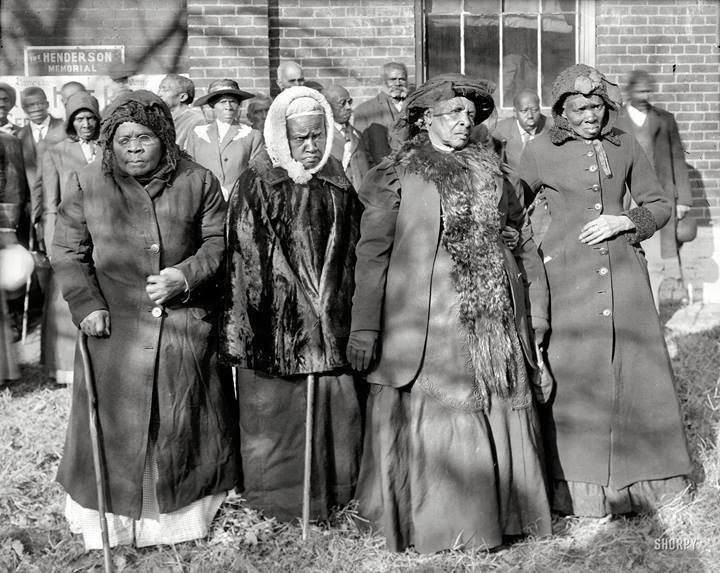
Pictured from left to right: Annie Parram, age 104; Anna Angales, age 105; Elizabeth Berkeley, 125; Sadie Thompson, 110.

Pictured from left to right: Annie Parram, age 104; Anna Angales, age 105; Elizabeth Berkeley, 125; Sadie Thompson, 110.
Zelda Barbour Wynn Valdes (1901–2001)
Posted on June 9, 2017by contributed by: Samuel Momodu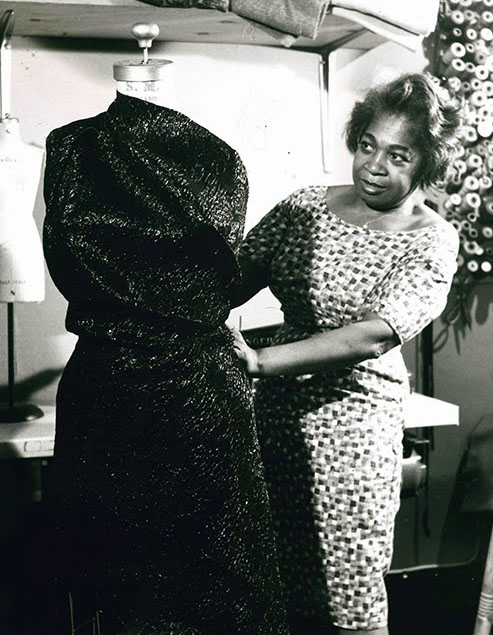
Zelda Barbour Wynn Valdes was an African American fashion and costume designer. Valdes was the first black designer to open her own shop, which was the first black-owned business on Broadway in New York City, New York in 1948. Her designs have been worn by famous entertainers such as Dorothy Dandridge, Josephine Baker, Marian Anderson, Josephine Baker, Ella Fitzgerald, Mae West, Ruby Dee, Eartha Kitt, and Sarah Vaughan, among others.
Zelda Valdes was born on June 28, 1905, in Chambersburg, Pennsylvania. She studied her grandmother’s work as a seamstress and also worked in her uncle’s tailoring shop. Valdes began working as a stock girl at a high-end boutique around 1920 and worked her way up to become the boutique’s first black sales clerk and tailor.
In 1948 at the age of forty-seven, Valdes opened the first African American owned boutique in Manhattan on Broadway and West 158th Street with her sister, Mary Barbour, who worked as her assistant. She called her store, Chez Zelda. Valdes’s boutique soon attracted numerous celebrities and society women. She would later move Chez Zelda to midtown Manhattan, setting up shop on 57th Street. In 1949 Valdes was elected president of the New York Chapter of the National Association of Fashion and Accessory Designers (NAFAD), an organization of black designers that was founded by educator and political activist Mary McLeod Bethune.
Valdes’s celebrity clients included Josephine Baker, Mae West, Ella Fitzgerald, Dorothy Dandridge, Eartha Kitt, and Marian Anderson. Valdes’s fashion designs were responsible for creating a new sexier image for singer Joyce Bryant who was a huge star in the African American community in the early 1950s and whom Life Magazine later described as the “the Black Marilyn Monroe.” In 1958 Playboy Magazine founder Hugh Hefner hired Valdes to design the first Playboy Bunny costumes. Hefner commissioned Valdes to do this work on the recommendation of the magazine’s promotion director, Victor Lownes. Originally, the Valdes design had the ears taller and the ensemble lacked the trademark bow tie, collar, and cuffs. First unveiled publicly in an early episode of Playboy’s Penthouse Magazine, the bunny costume made its formal debut at the opening of the first Playboy Club in Chicago, Illinois on the evening of February 29, 1960.
In 1970 Arthur Mitchell asked Valdes to design costumes for his new company, the Dance Theater of Harlem. Valdes would continue to work with the Dance Theater of Harlem until her death on September 26, 2001, at age ninety-six.
https://www.blackpast.org/african-american-history/valdes-zelda-barbour-wynn-1901-2001/
Silas Adekunle is a Nigerian technology entrepreneur known for creating the world's first intelligent gaming robot.[1]
He earned a first class degree in robotics from the University of the West of England.[2]
He is the co-founder of Reach Robotics, an augmented reality gaming company that creates robots for gaming and for STEM education.[3][4] Adekunle has partnered with Apple, signing an exclusive distribution deal to sell his product in both the United States and Britain.[5] As at September 2018, Adekunle was the highest paid robotic engineer in the world.
In November 2018, he was named to the Financial Times' list of the 'Top 100 minority ethnic leaders in technology.'
He earned a first class degree in robotics from the University of the West of England.[2]
He is the co-founder of Reach Robotics, an augmented reality gaming company that creates robots for gaming and for STEM education.[3][4] Adekunle has partnered with Apple, signing an exclusive distribution deal to sell his product in both the United States and Britain.[5] As at September 2018, Adekunle was the highest paid robotic engineer in the world.
In November 2018, he was named to the Financial Times' list of the 'Top 100 minority ethnic leaders in technology.'
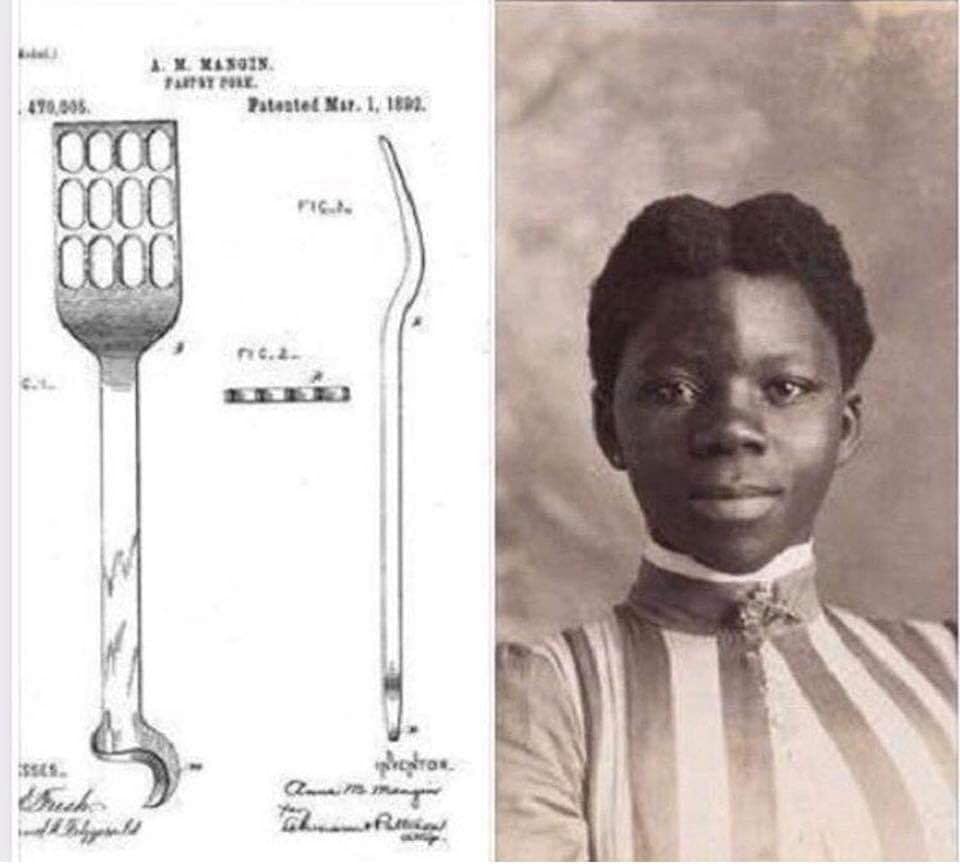
The next time you cook with a pastry fork/spatula remember that it was this 13 year old black girl, named Miss Anna M. Mangin, who invented it in 1892.
The young African American woman was awarded a patent on March 1, 1892, for a pastry fork mixing pastry dough.



The utensil makes it easy to mix dough for pie crusts, cookies, butter and flour pastries without needing to physically manipulate the ingredients with one’s hands. The fork is used to beat eggs, mash potatoes, and prepare salad dressings thanks to Anna M. Mangin.
Although there is no information on Mangin’s background and history, her patent application filed on July 7, 1891, gives us an idea of her voice. A portion of her application is below:
To all whom it may concern.-
Be it known that I, ANNA M. MANGIN, of Woodside, in the county of Queens and State of New York, have invented certain new and useful Improvements in Pastry-Forks; and I do hereby declare the following to be a full, clear, and exact description of the invention, such as will enable others skilled in the art to which it pertains to make and use it, reference being had to the accompanying drawings, which form part of this specification.
My invention relates to an improvement in pastry-forks.
The object of my invention is to provide-a fork or implement for working together butter or lard and flour without the operator having to touch these articles with the hands, and for making drawn butter and thickening, beating eggs, mashing potatoes, and preparing dressing for salads.
https://howafrica.com/meet-the-youn...hind-the-invention-of-the-pastry-fork-photos/
Providing there is no white man behind the scene this is good news.
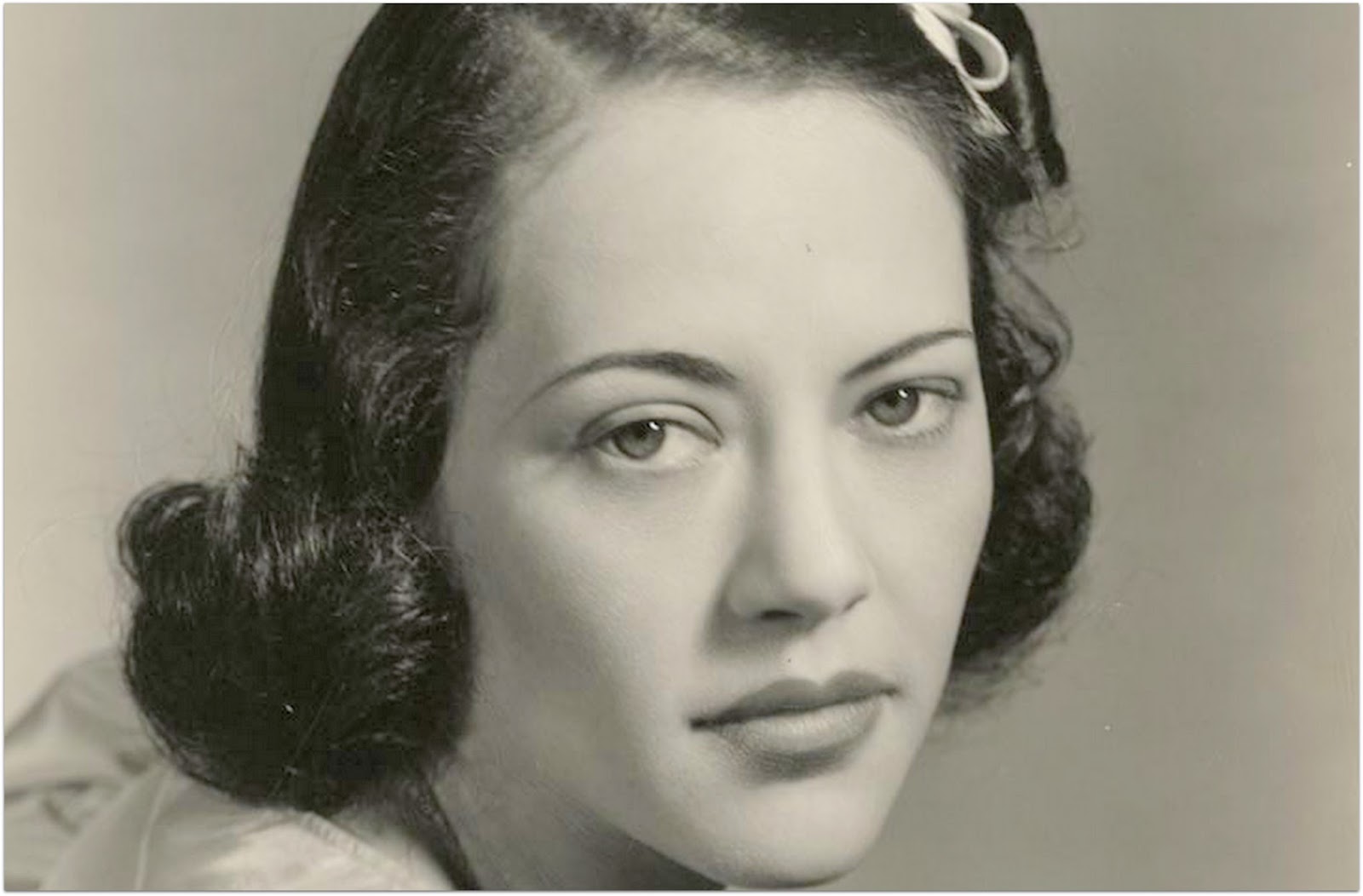
Fredi Washington (1903-1994) was an African/European-American actress, arguably best known for playing "Peola" in the original 1934 film "Imitation Of Life". Fredi was blackballed in Hollywood for because for embracing her African roots. Her final film role was in 1937, in the film "One Mile from Heaven". After her film-work she left Hollywood and returned to New York. In New York she focused on theater and production and served as a civil rights advocate. Listed below is a Fredi quote from 1940. "No matter how white I look, on the inside I feel black. There are many whites who are mixed blood, but still go by white. Why such a big deal if I go as Negro? Because people can't believe that I am proud to be a Negro and not white. To prove I don't buy white superiority, I chose to be a Negro."
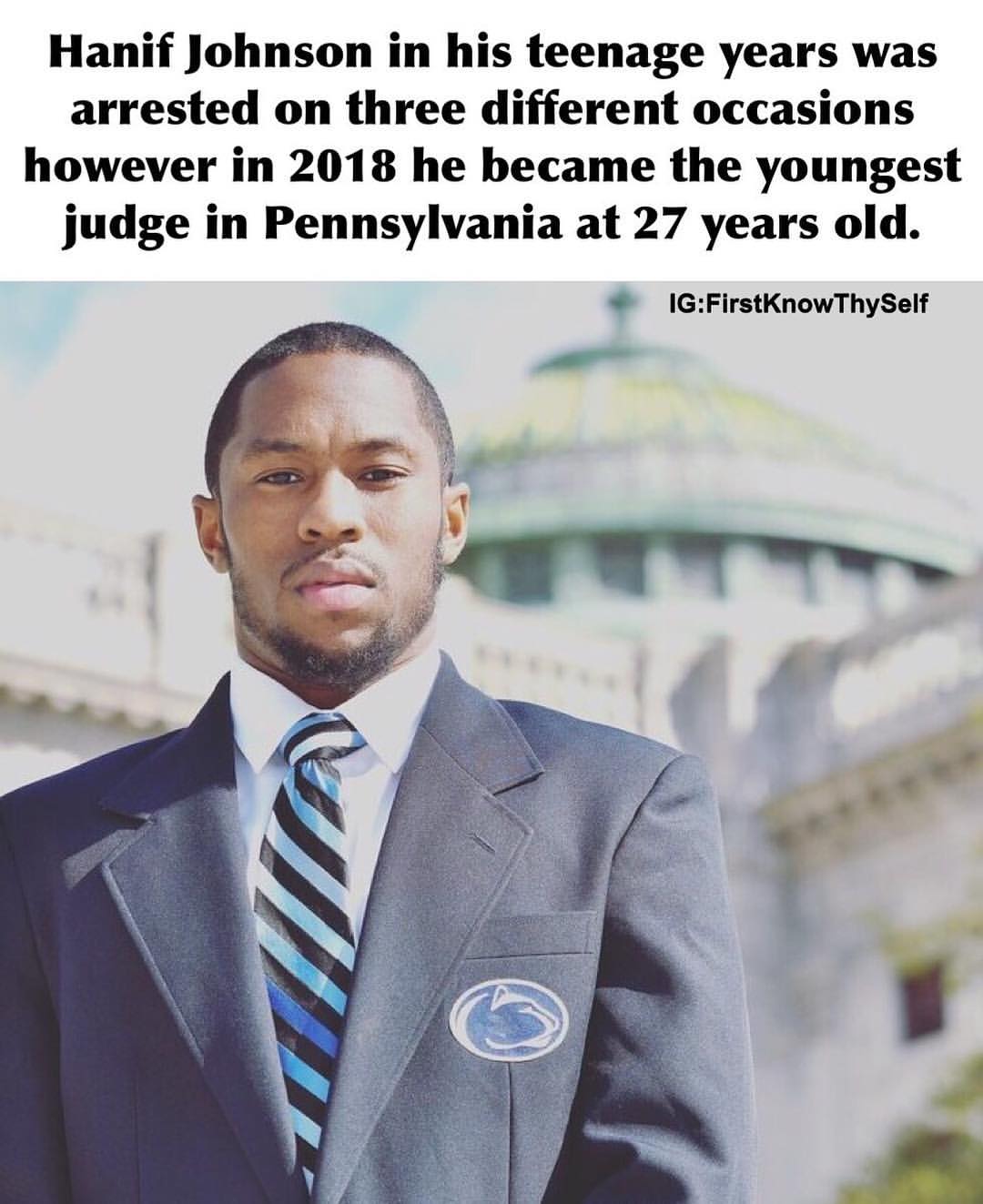
At 27, Hanif Johnson is the Youngest Judge in Pennsylvania

by Adedamola Agboola
February 6, 2018

Hanif Johnson
Hanif Johnson knows the trials and tribulations young people face. As a teenager, Johnson ran afoul of the law on different occasions and was imprisoned three times. Even as a student at Penn State University, Johnson, then the president of Omega Psi Phi was charged with assault in connection with a hazing allegation that earned him three weeks in jail. Although he wasn’t found guilty of the most serious charges, a judge still handed him two summary harassment charges.
“It’s crazy because I know how it feels sitting across from that judge and that jury when you’re innocent,” Johnson told the Huffington Post. “I went to jail for two weeks, then I went to trial. Thank God I won. That was one of the happiest days; I just felt like my life was going to be taken from me.”
He did turn his life around, though. Now, 27, he is the youngest elected judge in the State of Pennsylvania winning the magisterial seat over Republican Claude Phipps by a 73% margin in Dauphin County. The Harrisburg native, who began his six-year term in January said he decided to run for office because he knew if he wanted things to change, he had to get up and do something.
Judge Hanif Johnson is swearing in Elected Officials. #thecityofhbg pic.twitter.com/c2XgmWO6kc
— City of Harrisburg (@thecityofhbg) January 2, 2018
“When you sit back, and you see Donald Trump become president, and you hear about all of these things we are being affected by, it seems like everything happens through the court system,” Johnson told HuffPost, explaining why he decided to run for the seat. “Everybody always says, well, we complain about stuff, but we never get up and do anything. This is me getting up and doing something.”
Johnson, who currently coaches track and field at Harrisburg High School, said he wasn’t taken seriously when he announced his candidacy.
“They laughed at me in my face,” he said. They said, ‘Boy, if you don’t get away from my house saying you want to be a judge. You are too young!’ But after the fourth or fifth conversation, I would ask them who they are voting for, and they would say me.”
Magisterial District Judges are elected by the residents of the magisterial district in which they serve. They don’t have to be lawyers but do receive training that equips them to handle legal issues they will encounter on the bench.
“I guess I’m not a joke anymore,” he said.
https://www.blackenterprise.com/at-27-hanif-johnson-is-the-youngest-judge-in-pennsylvannia/
If you truly knew what the N-word meant to our ancestors, you’d NEVER use it
It was used and still can be used to make us hate ourselves
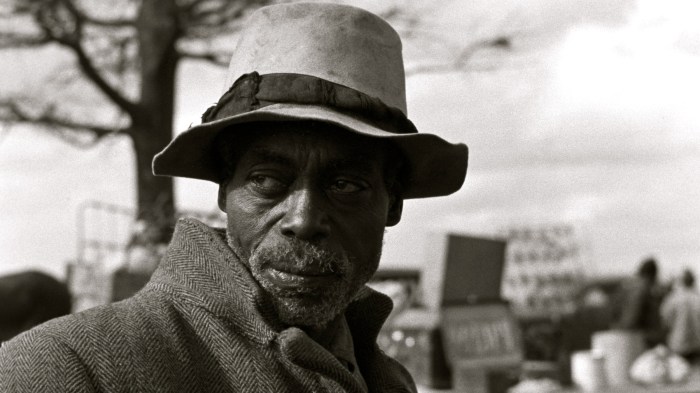
African American Evicted sharecropper, New Madrid County, Missouri
 BYBRANDO SIMEO STARKEY@BRANDOSTARKEY
BYBRANDO SIMEO STARKEY@BRANDOSTARKEY
May 18, 2017
A few years ago, I read slave narratives to explore the lives of black agricultural workers after the end of the Civil War. The narratives came from the Federal Writers Project of the Works Progress Administration, a program that employed researchers from 1936 to 1938 to interview former enslaved people, producing more than 2,300 narratives that, thankfully,reside online and are fully searchable.
Those whom the law defined as property recounted various unique human experiences — their daily horrors and monotonies, how they freed themselves or learned of their emancipation, the surge of exhilaration upon securing freedom, and how they endured life on the edges of a white supremacist society in the decades thereafter.
As I pored over the narratives, I was struck less by their experiences, as heartrending as they were, than by how their experiences sculpted their self-perceptions. The best explanation of what I gleaned, what social scientists calledinternalized oppression, describes the psychological trauma that ensues when a person from a stigmatized group believes those negative stigmas.
White folk indoctrinated them into accepting their supposed inferiority. These narratives illustrate the success of this campaign of mental terrorism, and no word conveyed the depth of this internalized oppression more than “******.” Now, whenever I hear the epithet, a visual and emotional representation of the heinous process by which a people — my people — were induced to think they were less than trespasses into my thoughts. After years of habitual use of “******,” I banished it from my speech to honor the humanity that many never saw in themselves.
The internalized oppression revealed itself in various ways. Sometimes the former enslaved people clearly, perhaps subconsciously, considered themselves subhuman, just like how their former owners regarded them. Jim Allen, for example, dubbed himself his master’s “pet ****** boy” and a “stray” and thought himself privileged because he could sleep on the floor beside his master’s bed. That he likened himself to a fortunate mangy mutt or frisky feline crushed me. The word laid bare a worldview that held black folk as a lower order of being, as when Irene Robertson claimed her former master Mr. Sanders was mean, in part, because “he beat his wife like he beat a ****** woman.”
“******” also signaled antipathy toward fellow black folk. After the end of slavery, Mattie Mooreman went north to Wisconsin with a white family for whom she worked. Members of the family wanted her to go to the circus to watch a black boy’s performance. She told her interviewer, “Guess they thought it would be a treat to me to see another niggah. I told ’em, ‘Law, don’t you think I see lots, lots more than I wants, every day when I is at home?’ ” But read how she talks about the family’s baby, whom she constantly watched over, fearing, irrationally, someone would kidnap him: “No matter what time they come home they’d find me there. ‘Why don’t you go in your bedroom and lie down?’ they’d ask me. ‘No,’ I’d tell ’em, ‘somebody might come in, and they would have to get that baby over my dead body.” Her eyes fixated on the white baby, but she saw too many *******.
A barrage of dispiriting uses of the word bloodied me as I combed through the narratives. “The Ku Klux kept the ******* scared.” “The Ku Klux did a whole lot to keep the ******* away from the polls. …” Slaves owned by “nice” masters are repeatedly called “free *******.” “******* ain’t got no sense. Put ’em in authority and they gits so uppity.” “I’se just a poor old ****** waitin’ for Jesus to come and take me to heaven.” Slave traders are called “****** traders.” Defiant enslaved people required the service of a “niggerbreaker.” “****** dogs” aided the recapture of those who escaped.
Perhaps more depressing, ironically, was that circumstances sometimes led them to opt against calling a black person a ******. William Porter stated that “some of the Tennessee ******* was called free *******. There was a colored man in Pulaski, Tennessee, who owned slaves.” A black man who kept others in bondage — he’s a “colored man,” yet those who were owned were “*******.” I instantly thought of a moment from theO.J.: Made in Americadocumentary when a white woman who saw black people talking to Simpson uttered, “Look at those ******* sitting with O.J.” Simpson delights in hearing this because she “knew I wasn’t black. She saw me as O.J.” Porter’s outlook matched that of both the racist white woman and the unspeakably racially deranged O.J.
Since reading those narratives, I’ve noticed this mindset when perusing the remarks of freed people in other contexts. For example, before the trial of Rufus Martin,a black man who stood accused of the 1903 murder of Charles Swackhammer, a woman whom theFort Worth Star-Telegramreferred to as an “old negress who occupied a front seat in the court room” bellowed:
It’s the white people that is to blame. They know that they got to make niggahs work or they ain’t no good and they know as long as they ‘low niggah men to loaf aroun’ low down saloons they ain’t goin’ to work. This man come from a good niggah fam’ly — one of the best I knows of, but the p’lice ‘lowed him to loaf aroun’ without workin’, and to drink and gamble, till he just got to be no good and thought he didn’t have to work. The p’lice ought to raid them low down niggah saloons every day and every night till they make every blessed one of the niggah toughs go to work or else send ’em all to the county road. Them saloons is what makes bad niggahs and the white folks is to blame for it, ’cause they let ’em run.
That Martin sported a reddish mustache, light hair and skin so bright he could pass for white almost certainly colored her perception that Martin came from a “good niggah fam’ly.”
Black folk rescued the word from the smoldering debris of a virulently racist land, reclaimed it and renovated the slur into a celebration of black comradery — defenders of contemporary usage of “******” repeat this. When this tale collides with reality, however, it shatters as a misreading of history — the current use of the word is owed less to white folk calling black folk “******” and more to black folk who thought they were ******* and said so. Black people have hurled the infamous word for nearly as long as white folk have. It exists within black speech now because it existed within black speech then. The uncomfortable truth must be confronted: Absent the internalized oppression of those who called white men and women their masters, “******” would probably not be a part of black folk’s lexicon. We black folk are reclaiming it not from bigoted white folk but from our ancestors, who, sadly, deemed their blackness a badge of inferiority.
I seek not to usher the word to the gallows. I harbor no aims to kill it. I can still bump a Young Thug track or chortle at a Dave Chappelle routine. “******” does not bar my enjoyment of popular culture. My soul, though, winces whenever I hear it. The decision for black people to include it in their vocabulary, nonetheless, remains personal, and I reject the criticism of black folk who continue to wield it.
I write only to summon the words of former enslaved people from beyond the grave to express that “******” is haunted by the ghosts of hate and the more spiritually chilling ghosts of self-hate.
Brando Simeo Starkey is an associate editor at The Undefeated and the author of In Defense of Uncle Tom: Why Blacks Must Police Racial Loyalty. He crawled through a river of books and came out brilliant on the other side.
https://theundefeated.com/features/...CmZ3CxQM-Uof_hVnrxe7BiN_29clRfYnGy2tGb4p25LjQ
It was used and still can be used to make us hate ourselves

African American Evicted sharecropper, New Madrid County, Missouri
 BYBRANDO SIMEO STARKEY@BRANDOSTARKEY
BYBRANDO SIMEO STARKEY@BRANDOSTARKEYMay 18, 2017
A few years ago, I read slave narratives to explore the lives of black agricultural workers after the end of the Civil War. The narratives came from the Federal Writers Project of the Works Progress Administration, a program that employed researchers from 1936 to 1938 to interview former enslaved people, producing more than 2,300 narratives that, thankfully,reside online and are fully searchable.
Those whom the law defined as property recounted various unique human experiences — their daily horrors and monotonies, how they freed themselves or learned of their emancipation, the surge of exhilaration upon securing freedom, and how they endured life on the edges of a white supremacist society in the decades thereafter.
As I pored over the narratives, I was struck less by their experiences, as heartrending as they were, than by how their experiences sculpted their self-perceptions. The best explanation of what I gleaned, what social scientists calledinternalized oppression, describes the psychological trauma that ensues when a person from a stigmatized group believes those negative stigmas.
White folk indoctrinated them into accepting their supposed inferiority. These narratives illustrate the success of this campaign of mental terrorism, and no word conveyed the depth of this internalized oppression more than “******.” Now, whenever I hear the epithet, a visual and emotional representation of the heinous process by which a people — my people — were induced to think they were less than trespasses into my thoughts. After years of habitual use of “******,” I banished it from my speech to honor the humanity that many never saw in themselves.
The internalized oppression revealed itself in various ways. Sometimes the former enslaved people clearly, perhaps subconsciously, considered themselves subhuman, just like how their former owners regarded them. Jim Allen, for example, dubbed himself his master’s “pet ****** boy” and a “stray” and thought himself privileged because he could sleep on the floor beside his master’s bed. That he likened himself to a fortunate mangy mutt or frisky feline crushed me. The word laid bare a worldview that held black folk as a lower order of being, as when Irene Robertson claimed her former master Mr. Sanders was mean, in part, because “he beat his wife like he beat a ****** woman.”
“******” also signaled antipathy toward fellow black folk. After the end of slavery, Mattie Mooreman went north to Wisconsin with a white family for whom she worked. Members of the family wanted her to go to the circus to watch a black boy’s performance. She told her interviewer, “Guess they thought it would be a treat to me to see another niggah. I told ’em, ‘Law, don’t you think I see lots, lots more than I wants, every day when I is at home?’ ” But read how she talks about the family’s baby, whom she constantly watched over, fearing, irrationally, someone would kidnap him: “No matter what time they come home they’d find me there. ‘Why don’t you go in your bedroom and lie down?’ they’d ask me. ‘No,’ I’d tell ’em, ‘somebody might come in, and they would have to get that baby over my dead body.” Her eyes fixated on the white baby, but she saw too many *******.
A barrage of dispiriting uses of the word bloodied me as I combed through the narratives. “The Ku Klux kept the ******* scared.” “The Ku Klux did a whole lot to keep the ******* away from the polls. …” Slaves owned by “nice” masters are repeatedly called “free *******.” “******* ain’t got no sense. Put ’em in authority and they gits so uppity.” “I’se just a poor old ****** waitin’ for Jesus to come and take me to heaven.” Slave traders are called “****** traders.” Defiant enslaved people required the service of a “niggerbreaker.” “****** dogs” aided the recapture of those who escaped.
Perhaps more depressing, ironically, was that circumstances sometimes led them to opt against calling a black person a ******. William Porter stated that “some of the Tennessee ******* was called free *******. There was a colored man in Pulaski, Tennessee, who owned slaves.” A black man who kept others in bondage — he’s a “colored man,” yet those who were owned were “*******.” I instantly thought of a moment from theO.J.: Made in Americadocumentary when a white woman who saw black people talking to Simpson uttered, “Look at those ******* sitting with O.J.” Simpson delights in hearing this because she “knew I wasn’t black. She saw me as O.J.” Porter’s outlook matched that of both the racist white woman and the unspeakably racially deranged O.J.
Since reading those narratives, I’ve noticed this mindset when perusing the remarks of freed people in other contexts. For example, before the trial of Rufus Martin,a black man who stood accused of the 1903 murder of Charles Swackhammer, a woman whom theFort Worth Star-Telegramreferred to as an “old negress who occupied a front seat in the court room” bellowed:
It’s the white people that is to blame. They know that they got to make niggahs work or they ain’t no good and they know as long as they ‘low niggah men to loaf aroun’ low down saloons they ain’t goin’ to work. This man come from a good niggah fam’ly — one of the best I knows of, but the p’lice ‘lowed him to loaf aroun’ without workin’, and to drink and gamble, till he just got to be no good and thought he didn’t have to work. The p’lice ought to raid them low down niggah saloons every day and every night till they make every blessed one of the niggah toughs go to work or else send ’em all to the county road. Them saloons is what makes bad niggahs and the white folks is to blame for it, ’cause they let ’em run.
That Martin sported a reddish mustache, light hair and skin so bright he could pass for white almost certainly colored her perception that Martin came from a “good niggah fam’ly.”
Black folk rescued the word from the smoldering debris of a virulently racist land, reclaimed it and renovated the slur into a celebration of black comradery — defenders of contemporary usage of “******” repeat this. When this tale collides with reality, however, it shatters as a misreading of history — the current use of the word is owed less to white folk calling black folk “******” and more to black folk who thought they were ******* and said so. Black people have hurled the infamous word for nearly as long as white folk have. It exists within black speech now because it existed within black speech then. The uncomfortable truth must be confronted: Absent the internalized oppression of those who called white men and women their masters, “******” would probably not be a part of black folk’s lexicon. We black folk are reclaiming it not from bigoted white folk but from our ancestors, who, sadly, deemed their blackness a badge of inferiority.
I seek not to usher the word to the gallows. I harbor no aims to kill it. I can still bump a Young Thug track or chortle at a Dave Chappelle routine. “******” does not bar my enjoyment of popular culture. My soul, though, winces whenever I hear it. The decision for black people to include it in their vocabulary, nonetheless, remains personal, and I reject the criticism of black folk who continue to wield it.
I write only to summon the words of former enslaved people from beyond the grave to express that “******” is haunted by the ghosts of hate and the more spiritually chilling ghosts of self-hate.
Brando Simeo Starkey is an associate editor at The Undefeated and the author of In Defense of Uncle Tom: Why Blacks Must Police Racial Loyalty. He crawled through a river of books and came out brilliant on the other side.
https://theundefeated.com/features/...CmZ3CxQM-Uof_hVnrxe7BiN_29clRfYnGy2tGb4p25LjQ
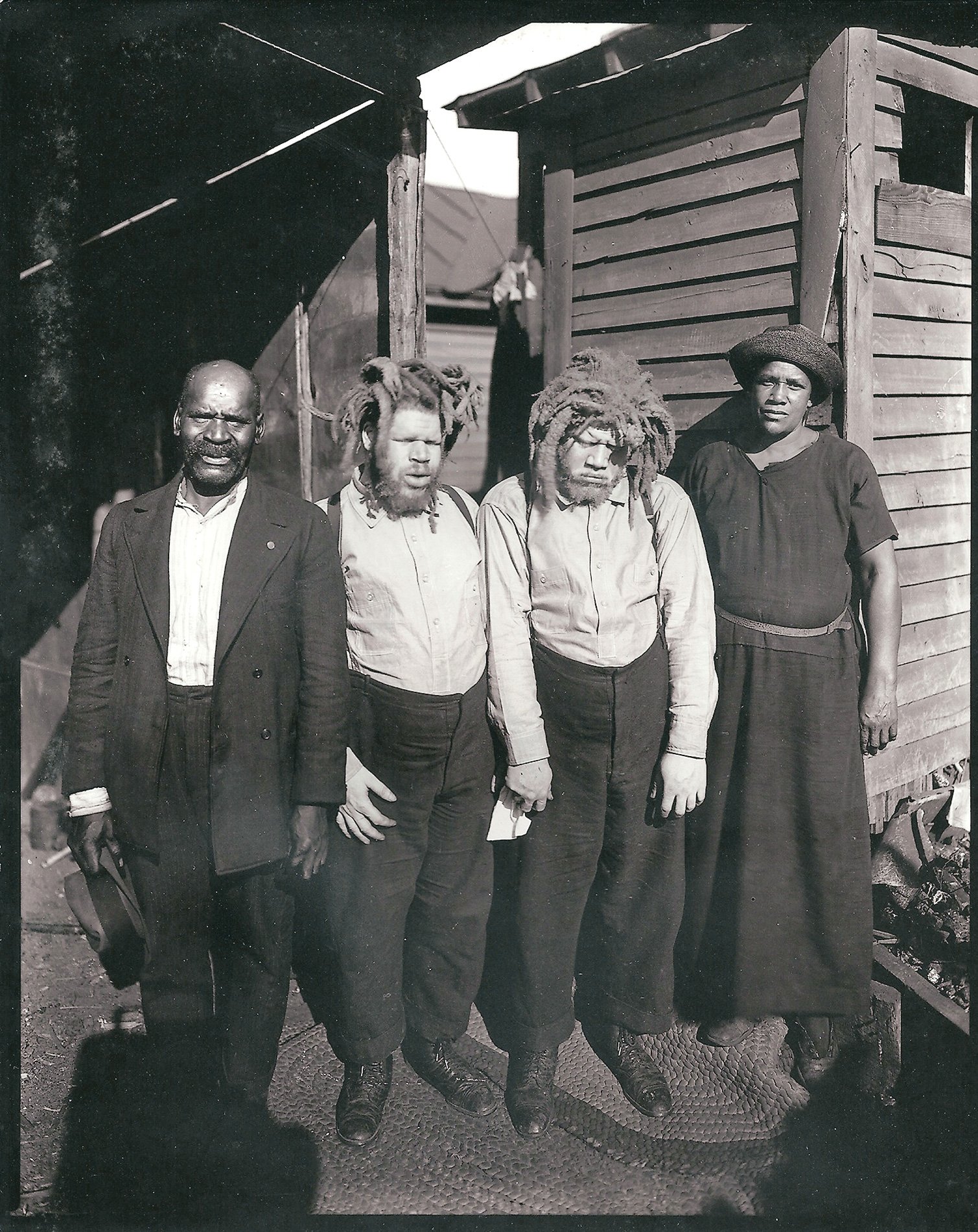
In the Early 1900s, Albino African-American Brothers Were Stolen From Their Virginia Home to Be Circus Performers. This Is Their Story.
Their music briefly became famous, but today their history is mostly forgotten. In an excerpt from her book Truevine, Beth Macy resurrects their mother’s fight to free her boys.
Written by Beth Macy | Published on October 16, 2016

George and Willie in the only known picture of them with one of their captors, showman Al G. Barnes. Photograph courtesy of Josh Meltzer.
Tweet Share
Talk to any person of color over age 60 in my part of Virginia and they know the story by heart: Black children reared during the postwar baby boom rarely left home without being admonished by their mothers, “Y’all stay together now or you might be kidnapped, just like Eko and Iko.”
Eko and Iko were the sideshow stage names of George and Willie Muse, the grandsons of former slaves. They were born at the turn of the century to parents who sharecropped tobacco, like everyone else in the rural enclave of Truevine, Virginia.
George and Willie were just six and nine, as the elders tell the story, when a circus promoter crept onto the tobacco field where they were working and enticed them with a rare piece of candy. In the time it took to fetch a hoe from the shed, the boys vanished.
They were kidnapped in a dusty corner of southern Virginia named for the only thing that gave these Reconstruction-era blacks any semblance of hope—the biblical promise of a better life in the hereafter. “I am the true vine, and My father is the vinedresser,” Jesus said in the Gospel of John. “Every branch in Me that does not bear fruit He takes away; every branch that bears fruit He prunes, that it may bear more fruit.”
For the next 13 years, their mother, Harriett, watched and worried. And she waited for signs of fruit.
***
They were easy pickings for a traveling circus. The brothers were African-American albinos with watery blue eyes and blond hair, and their vision was poor, the result of an oscillating eye condition routinely misinterpreted as a mental deficiency.
In the late 19th century, the height of circus popularity, bounty hunters scoured America’s backwoods—and the world—looking for people they could transform into sideshow attractions. Acts such as Chang and Eng, the world’s most famous conjoined twins, “discovered” by a British merchant in Siam (now Thailand) in 1829. Or the Wild Men of Borneo, as impresario P.T. Barnum pitched a pair of dwarf brothers to audiences in 1880 . . . though they actually hailed from a farm in Ohio.
Somehow Barnum had heard about the albino brothers—maybe from a shopkeeper in nearby Rocky Mount, the county seat. Maybe a neighbor had seen the ads that showmen took out in newspapers and trade publications for “freak hunters,” as they were called.
Wanted — to hear from the man that grows three feet in front of your eyes . . . Call DAN RICE, Sioux City, Iowa.
Maybe even a member of their own family had given the boys up.
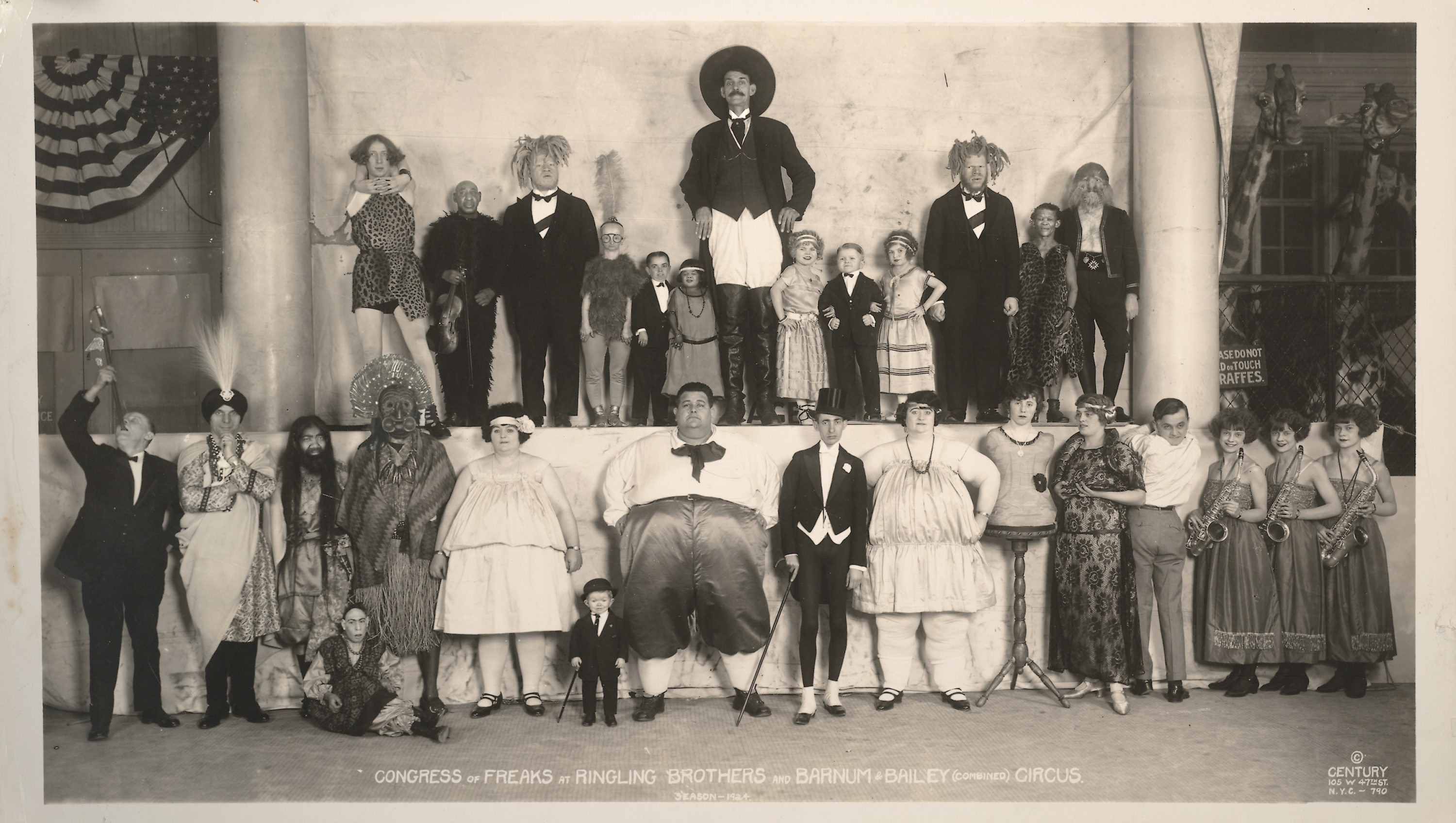
A 1924 “class photograph” of sideshow acts in the Ringling Brothers and Barnum & Bailey Circus. George Muse is third from left, upper row; Willie is third from right. Photograph courtesy of the John and Mable Ringling Museum of Art Tibbals Collection.
Although the timeline of the brothers’ earliest years is fuzzy, owing to illiteracy and uneven documentation, this much is certain: From 1914 to 1927, circus managers transformed the Muse brothers from scared little boys into world-famous sideshow freaks. George and Willie weren’t permitted to go to school or learn to read. They weren’t paid for their work. To stop them from begging to return home, they were told their mother was dead.
One day, a circus photographer handed them a banjo and guitar, telling them to pose with the instruments as photo props. It had to be a joke, their manager reasoned, that the strange-seeming brothers could ever learn the simplest of tunes. Little did he know that George and Willie harbored the innate ability to teach themselves almost any tune.
Get Washingtonian’s Daily DC Updates (Not Just Another Political News Roundup)
Though he was only three years older, George became Willie’s protector and his voice. George did most of the talking for the two, while Willie communicated mainly through his music. During World War I, they both took solace in the popular anthem “It’s a Long Way to Tipperary,” a song about missing home.
Sideshow operators dressed them in outlandish costumes and sculpted their hair into dreadlocks, shaped like sparklers exploding at the crown of their heads. They erected elaborate banners, alternately heralding the boys as “Barnum’s Original Monkey Men,” “the Ambassadors from Mars,” and “the Sheep-headed Men,” all the while spinning wild yarns about how the brothers had come to join the circus: They’d been discovered floating on a raft off the coast of Madagascar. Found in the Mojave Desert outside the remains of a Martian spaceship.
sideshow operators called them ‘barnum’s original monkey men,’ ‘ambassadors from mars,’ and ‘the shepherded men.’
As showman Al G. Barnes recalled in his 1936 memoir: “There was a story to the effect that the boys were members of a colony of sheep-headed people inhabiting an island in the South Seas; that they had been captured after many hair-raising escapes, and that they were the only specimens in captivity. The boys had a very low grade of intelligence, and the press-agent story fitted them well.”
But one after another, circus managers underestimated George and Willie Muse, who could hear a song just once and replicate it, by ear, on any instrument they were handed. Not just the guitar and banjo but the harmonica, saxophone, and xylophone, too.
More important, the showmen underestimated their mother, Harriett Muse, who’d moved to Roanoke not long after her sons’ disappearance. Destitute, illiterate, and soon to be widowed, she had relocated there seeking better-paying work as a maid, like so many sharecropping migrants—all the while never giving up hope that she would one day find her sons.
The answer finally came to Harriett in a dream, she told her family, in a story that’s been handed down from relative to relative until it’s all but fused into the family’s DNA.
The Greatest Show on Earth was making its way to Roanoke, and Harriett vowed: They could lynch her if they wanted, but one way or another, she was going to confront Ringling Brothers and Barnum & Bailey Circus, find her sons, and do everything she could to bring them home.
***
The day it happens, it’s the fall of 1927, a time when the city’s top law-enforcement officer is the founder of the local Ku Klux Klan and when Ringling executives travel with their own cadre of lawyers.
The bustling young railroad town has finally grown big enough to host the circus known as the Big One. By now, it has been 13 years since Harriett last laid eyes on her sons.
George and Willie can’t read the WELCOME TO ROANOKE sign as their train rolls through the mountains east from Bristol, past the crimson fall foliage and into the booming city. They probably recognize the topography of their childhood, though, as the sun rises and the train chugs through the red-clay hills where the Alleghenies meet the Blue Ridge. Past Poor Mountain, past Twelve O’Clock Knob, then past Fort Lewis until, finally, the train comes to a creaky halt in Roanoke, where Mill Mountain stands sentinel over the town.
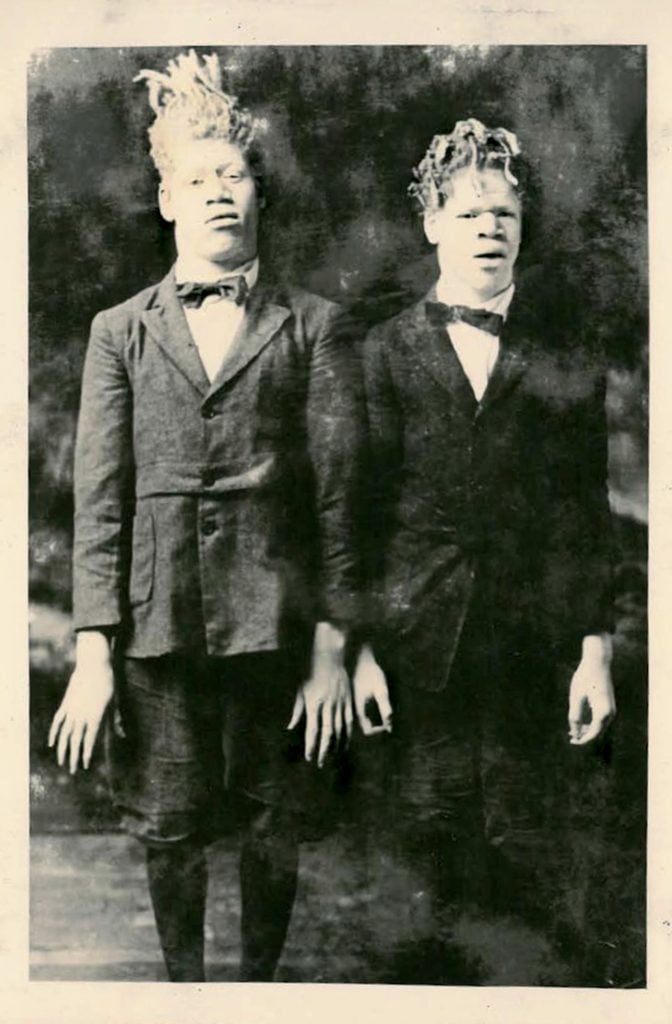
George and Willie Muse in the earliest known photograph of them in the circus. Photograph courtesy of the John and Mable Ringling Museum of Art Tibbals Collection.
The four-engine, five-ring behemoth arrives at 9 am on October 14. The tents and banners are hoisted, the animals disembark. Walking into the fairgrounds late that morning, George and Willie are as surprised as anybody to run into a familiar face.
It’s Leslie Craft Crawford, a neighbor from childhood. They haven’t seen her since then, not since they played together in Craigs Creek. But they recognize her immediately, exclaiming “Miss Leslie!” and waving their arms.
Surely it occurs to them how close they are to home: If Miss Leslie’s here, then maybe their mother is also nearby—assuming she’s alive.
Outside the tent, Harriett probably spies her sons’ banner picture first, though it’s doubtful she recognizes them from it, because showmen took pains to make them look neither albino nor black in the image but rather a garden-variety vanilla—the idea being that they wanted to “ward off an unpleasant or unfavorable reaction from the potentially racist general public,” as one historian put it.
The banner takes up prominent real estate, just to the right of the sideshow entrance—with a giant sign announcing continuous performances and topped by waving American flags. ARE THEY AMBASSADORS FROM MARS?, it says at the top, just to the left of the banner for Jolly Irene (real name Amanda Siebert), who at 620 pounds likely suffers from an untreated thyroid disorder.
Harriett Muse enters and finds her place near the back of the crowd as the inside lecturer wanders from one performer to the next, giving his spiel. As the audience follows him, she nudges her way toward the front.
The brothers, meanwhile, have taken their place on the sideshow stage, and when it’s time to introduce themselves and play the mandolin and guitar, they squint hard, their eyes scanning the standing, milling crowd. (As is typical with Ringling and other large circuses, there are no chairs inside the sideshow tent, making it the rare place in the circus where segregation codes often break down.)
The albinism has caused their vision to dim considerably in recent years, but if they squint just right, they can make out the faces near the front.
They sing their favorite song as they strum:
It’s a long way to Tipperary,
It’s a long way to go. . . .
George and Willie are halfway through it when their mother’s face comes hazily into focus. There are worry lines on her forehead, a deep crease between her brown, piercing eyes. She’s wearing a hand-sewn black dress, its collar cinched by a safety pin, a belt loose around her waist. Her dress is so long that it almost touches the tops of her creased, laceless shoes.
George spots her first and stops playing. He elbows his brother, in a scene the family will recount often, with pride, over the years.
“There’s our dear old mother,” George says. “Look, Willie, she is not dead.”
The crowd is puzzled when the brothers drop their personas, along with their instruments, and rush from the stage. They greet their mother, folding themselves into her tall, sturdy frame.
The band starts playing, but all the Dixieland jazz on the planet can’t cloud this astonishing reunion, this almost surreal instant in time. Before it’s over, a man named Candy Shelton appears, demanding to know: Who is this woman and why is she disrupting my show?
Harriett stands firm, clutching her sons. It’s dawning on her that he’s the man in charge, the one responsible for the trafficking of her sons. For the 13 years of family holidays, birthdays, and weddings that have passed without word of their health or whereabouts.
She will not leave the fairgrounds, she insists, unless George and Willie accompany her home.
But they’re Shelton’s children, he has the nerve to insist. They’re his property. He even has documents, somewhere, paperwork proving they have the same last name as he does!
A scrum of Ringling executives arrives to try to shore up Shelton’s claim, men in dark suits and fedoras—the people George and Willie have nicknamed City Hall.
The police are on their way, too.
The Ringlings are powerful people, they remind the maid—multimillionaires who have the ear of Presidents, their own railway lines, and mansions in several states.
Still, standing amid the sawdust in her dusty oxfords, Harriett refuses to budge. In an act of extraordinary defiance, a stance that could have easily landed her in jail, she doesn’t move when eight Roanoke police officers converge on the lingering, growing crowd, everybody eagerly listening and watching for her next move.
“They are my children!” she says.
It works. She convinces police officers to let them leave, as the newspaper describes it, with their “old mammy who yo all aint seen for all dese years,” awkwardly attempting to convey Harriett’s dialect without directly attributing it.
Even more astonishing, two days later, the tattered maid from Truevine will put on her best clothes, walk downtown, and hire an ambitious white lawyer to take on the Greatest Show on Earth.

Harriett Muse, right, and husband Cabell, far left, with the brothers shortly after she found them at a sideshow in 1927. Photograph by George Davis, courtesy of Frank Ewald
For four generations, that was the story that was whispered and handed down through black families in Roanoke. It was as steeped in folklore as it was sullied by racist news accounts that dominated the Jim Crow–era press. It was accurate, but also incomplete.
The truth about what happened to the brothers in the intervening years was so raw that their relatives refused to talk about it. It took more than two decades of research before I understood that it was even more tangled—and more troubling—than what the old people knew.
In 1928, the Muse brothers returned to the circus, initially on their own terms. From Buckingham Palace to the islands of Hawaii, they performed alongside sword swallowers and giants and some of the Munchkins later cast in The Wizard of Oz. By the late 1920s, they were headline sideshow acts and star freaks, featured prominently in opening-day dispatches written from Madison Square Garden for the New York Times.
But for many years, Candy Shelton, their longtime circus manager, still called the shots, I discovered in long-buried court documents and circus archives and by interviewing some of Roanoke’s oldest citizens. Even after their mother’s 1927 lawsuit resulted in a settlement for their back wages and a labor contract, Shelton still skimmed their pay and controlled their every move.
During off-season visits home to see their relatives, he lingered menacingly beside them as they sat on their mother’s porch. “He hovered over ’em, like a person who was in charge,” one neighbor recalled. “So they wouldn’t run off. The circus owned ’em, you see.”
For decades, Harriett waged legal battles against Shelton and other sideshow managers to get her sons paid. Despite several rulings in their favor, it was a constant struggle to make sure they were compensated and the stipulations of the judicial rulings adhered to.
Because of their mother’s efforts, and her tenacity to hold the show managers accountable, the money sent back to Roanoke enabled her to buy a small farmhouse in the country and set the family on a path to financial stability that gradually drew them out of poverty.
When Harriett died of a heart attack en route to pick up her wartime sugar rations in 1942, the family buried her in an unmarked grave in a segregated cemetery. They paid off her property instead and made plans to buy a bigger, much nicer house—in town—for Willie and George.
The brothers returned to Roanoke for their mother’s funeral, this time without Shelton watching over them. Neighbor kids gathered afterward, trying to get a peep at their peculiar hair, their milky skin, their fluttering blue eyes.
“Mama’s gone,” George said, shaking his head.
“Mama’s gone,” Willie repeated, shaking his head.
***
On a warm fall day in 2015, I walked that cemetery with a Muse family relative and a burial-park caretaker, who pointed to the probable site of Harriett’s unmarked grave.
If you look closely down the row, he showed us, you could make out the indentations where the ground sinks in just so, the outline of the graves as straight and rectangular as a set of xylophone keys.
From “Truevine,” out this month. Copyright © 2016 by Beth Macy. Used by permission of Little, Brown and Company, New York. All rights reserved. Beth Macy, who lives in Roanoke, is also author of “Factory Man: How One Furniture Maker Battled Offshoring, Stayed Local—and Helped Save an American Town.” She can be reached through her website, AuthorBethMacy.com.
This article appears in our October 2016 issue of Washingtonian.
https://www.washingtonian.com/2016/...-african-american-brothers-circus-performers/
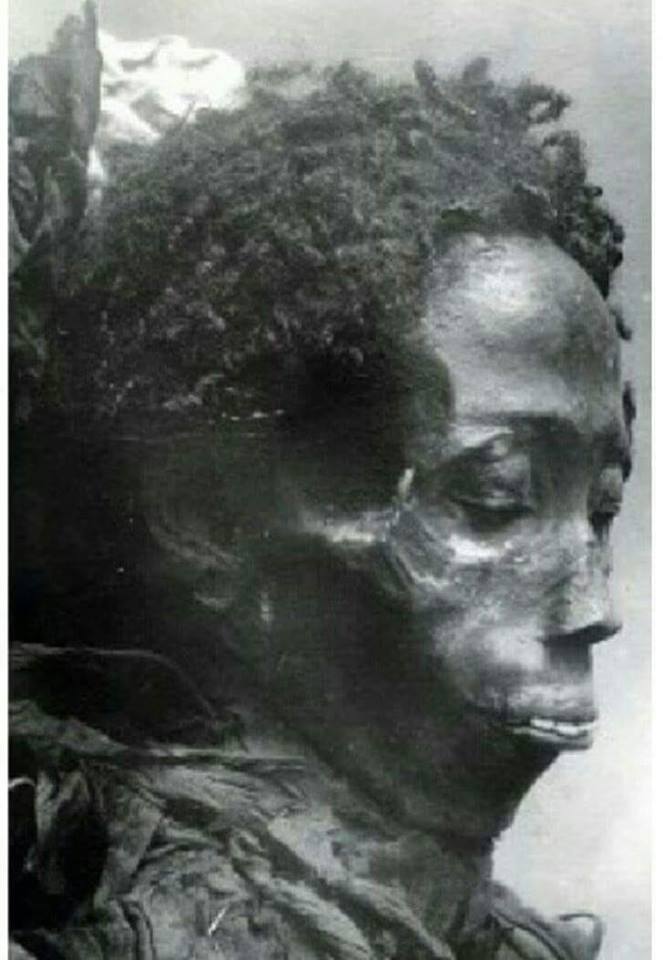
WE GAVE THE WORLD LANGUAGE, MATHEMATICS, SCIENCE, MUSIC, ARCHITECTURE, ENGINEERING AND MEDICINE. Even today we are innovators. We created Rock n roll, Hip hop, Jazz and all the latest dance moves. We created most of America early inventions during a time it was illegal for us to read or write. Also we can dominate any sport. At one point in the Golden Age of our Civilization the rest of the world saw the Black Man/Women as a god.
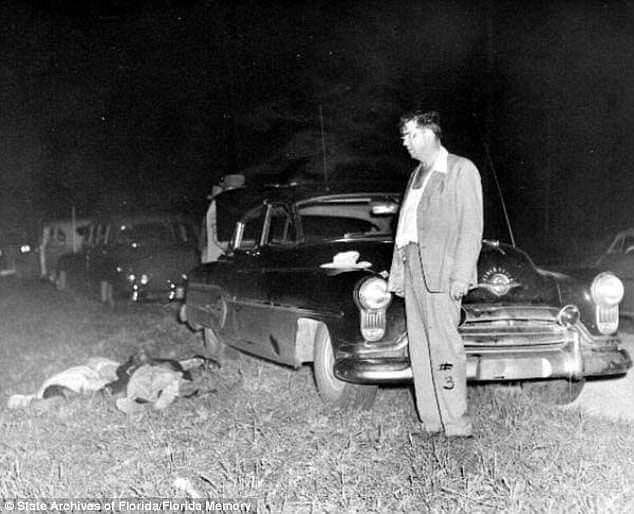
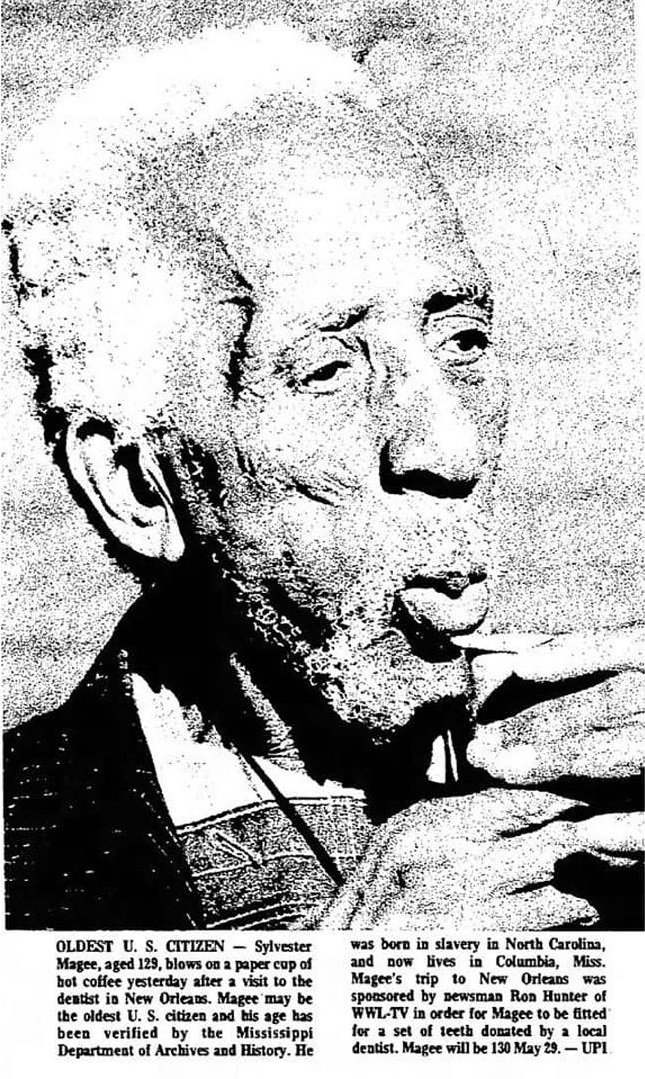
Jet wrote that, according to historians, "it would have been impossible for a person who neither reads nor writes to have related the stories of the Civil War in such detail as Magee without having served in the conflict". Jet quoted a historian who stated that Magee talked with "rare intelligence and seldom rambled" in telling of his participation in the Civil War.
On October 15, 1971, Sylvester Magee died in Columbia, Mississippi. His funeral was held at John the Baptist Missionary Church on October 19, 1971. He was buried in Pleasant Valley Church Cemetery in nearby Foxworth, Mississippi.
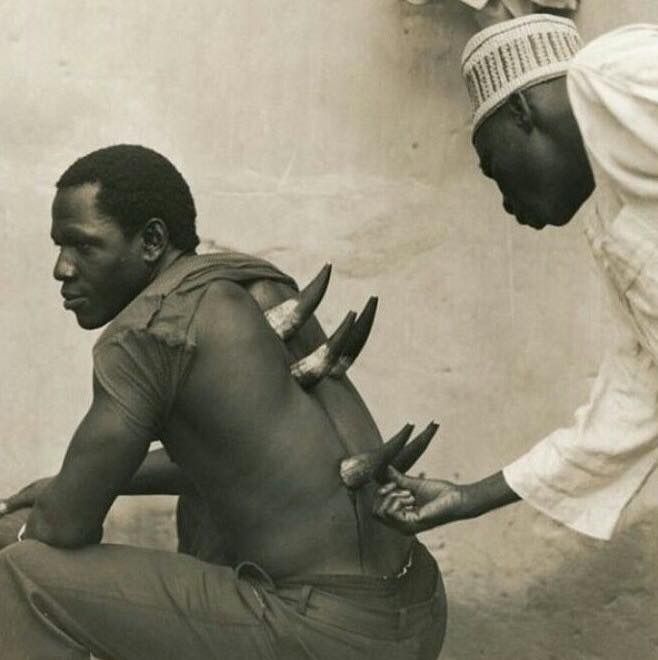
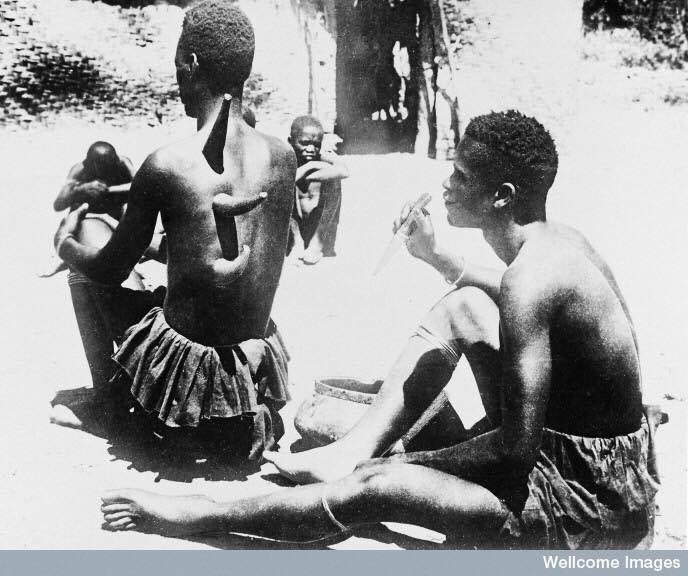

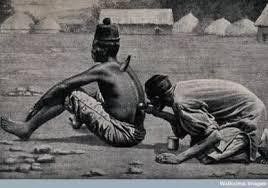
By Ilan Moss | ilanmoss
May 05, 2016
Abdel is a graphic designer at the University of Khartoum and suffers from a most 21st century aliment: an aching back, due to hours spent hunched over his computer.
Yet to cure his pains, he opts for a technique that has not changed much since the 9th century: Hijama, the traditional cupping technique practiced throughout the Muslim world.
During a visit to Sudan, I had the chance to spend an afternoon with Ahmed and his Hijama healers.
I was in Khartoum to learn about mycetoma, a terrible flesh-eating fungal infection that is endemic in Sudan and for which there is no safe, affordable treatment. In the absence of a cure, patients often go to traditional healers to treat the massive tumor-like infections caused by mycetoma.
Hijama is used therapeutically as a pain reliever for aches.
Healers use herbs and roots but some also cut and burn the affected area. Stories exist of healers crushing battery acid and rubbing it on mycetoma tumors, causing excruciating pain while doing nothing to halt the infection spread up the body.
What I saw was completely different. Hijama is used therapeutically as a pain reliever for aches, pains, migraines. While bloodless ‘cupping’ is well-known around the world, Hijama takes it a step further by draining blood. Yet it is not bloodletting per se – no veins are opened.

Hijama Healers Ahmed (l) and Souma (Moussa) with their cupping tools.
Abdel had kindly invited me to his monthly Hijama session. Instead of holding the session in a marketplace, where my presence would attract too much attention, Abdel had the healers come to us. The healers, brothers Ahmed and Souma Moussa, set up in a traditional Darfur tea hut in a courtyard of the Soba University Campus in Khartoum.
The process starts with a cow horn. Ahmed creates a vacuum on the site of Abdel’s back pain with the horn, drawing the blood to the area.
He swears the technique is the only solution.
As the process starts, a few of Abdel’s colleagues from the University walk by and grimace – one woman shrieks. Abdel is an employee of the medical university and many of his colleagues are not on board with Hijama. He swears the technique is the only solution for his chronic back pain after long work days.
‘This isn’t magic or witchcraft,’ Ahmed Moussa assures me. ‘We’re just removing bad blood.’ The brothers learned their craft from family members in Gezira state, south of Khartoum.
Once he is satisfied with the cupping, Souma then makes several small incisions with a razor blade. Over the next 15 or so minutes, he drains the ‘bad’ blood using the suction cups.

Ahmed demonstrating how to cup with a cow horn.
Professor Ahmed Fahal, a famed surgeon who heads up the Mycetoma Research Centre in Khartoum – the only clinic for mycetoma worldwide – accompanied us as we watched Abdel get his treatment
‘This practice is dangerous,’ Professor Fahal insisted. ‘It can be a very important medium for transmission of infections both for the healer and the patient. Healers really need to wear gloves.’
The healers did not wear gloves though and did not use any chemical disinfectant. They did however use a hunk of rock salt to clean the wounds and Abdel grimaced as it was rubbed against the wound.
He felt a hundred times better.
As the healers start to pack up, I notice Abdel – shirt back on and ready to return to work – is helping to put away suctions cups in a special kit. I take a closer look at the design of the box, which he said was ordered from Saudi Arabia.

Curious packaging.
Lining the box are copies of what seems to be an 18th Century engraving of cupping in Europe. I mention to Abdel that I found it odd that a Hijama kit had European engravings but as he put his shirt on and walked out of the tea hut he didn’t see any irony. He felt a hundred times better. As he had told me a few minutes earlier when the process was over.
https://trueafrica.co/article/back-pains-sudans-traditional-hijama-healers-have-a-solution/
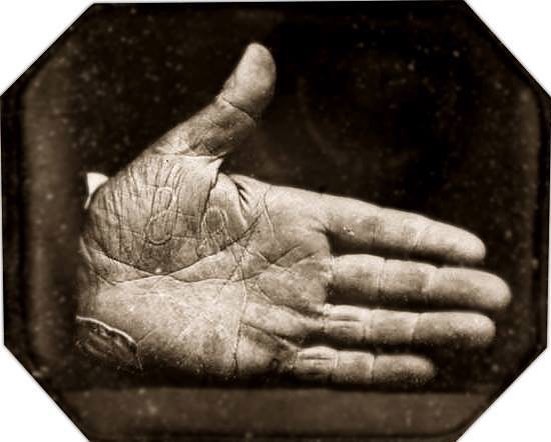
On 01-12, 1845, was the Branding of a Slave Stealer, Massachusetts sea captain, Jonathan Walker.
Walker was captain of a fishing vessel, but in early 1837, he went to Florida and became a railroad contractor. He was interested in the condition of the slaves, and in 1844 aided several of them in an attempt to make their escape in an open boat from the coast of Florida to the British West Indies. After doubling the capes, he was prostrated by illness; the crew, being ignorant of navigation, would all have been drowned if they had not been rescued by a wrecking sloop that took Walker to Key West. From there, he was sent in chains aboard USS General Taylor to Pensacola, where he was put in prison, chained to the floor, and deprived of light and proper food. Walker later wrote about the degrading conditions inside the jailhouse and the brutality shown toward slaves there.
Upon his trial in a United States court, Walker was convicted, sentenced to be heavily fined, put on the pillory, and branded on his right hand with a hot iron with the letters "S. S." for "slave-stealer". But to some he was "slave savior". A United States marshal executed the sentence. He was then returned to jail, where he was confined eleven months, and released only after the payment of his fine by northern abolitionists. For five years after his release, he lectured on slavery in the northern and western states. He moved to Michigan about 1850, where he lived near Muskegon until his death. A monument was erected to his memory on August 1, 1878.
Walker was the subject of John Greenleaf Whittier's poem "The Man with the Branded Hand". Whittier heard about Walker's actions after reading a book about him called Trial and Imprisonment of Jonathan Walker. The poem praised Walker's actions.
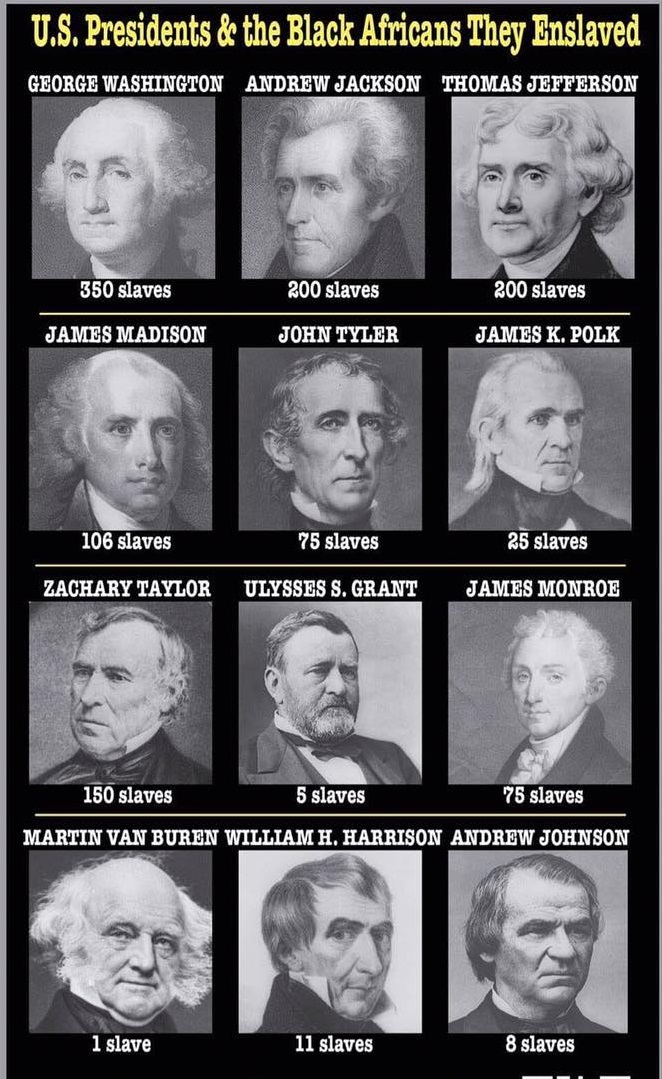
A HISTORY LESSON not taught in school. Why not?
Recently I watched a documentary about "How White Folks Got So Rich in America". Between free labor, (through slavery) providing the ENTIRE world with 89% of its cotton picked for FREE and sold for profit and the homestead act; which gave 943 million acres of nearly FREE land ($6.00 and acre) to people, as long as they built a home on it also helped to build generational wealth. 41% of american families still benefit from the homestead act in this country to this day by passing land down through generations of family members.
Black folks back then got none of that due to slavery.
A sardonic Ralph Wiley wrote: "Give me the free labor of one Black person for one year, I would be a rich man. Give me the free labor of a dozen Black people for one year, I would be a very rich man. Give me the free labor of millions of Black people for 250 years, I would be America." #wtficare
natalie.bourbon
Jefferson had sexual relations with a 14 year slave Salkt Hemmings. Many slave owners had children their female slaves. As of date, Hemming children with Jefferson were not allowed to be buried in the family plot.
thehealerhiphop
Not just America, we as Europeans also profited outrageously by cheap to free Labour from the African continent and by exploiting its resources and then they said we got wealthy from OUR work ethic and our intelligence, this just puts me to shame and the least i can do is to acknowledge that ugly truth and my responsibility to do what’s in my power to support African empowerment.
